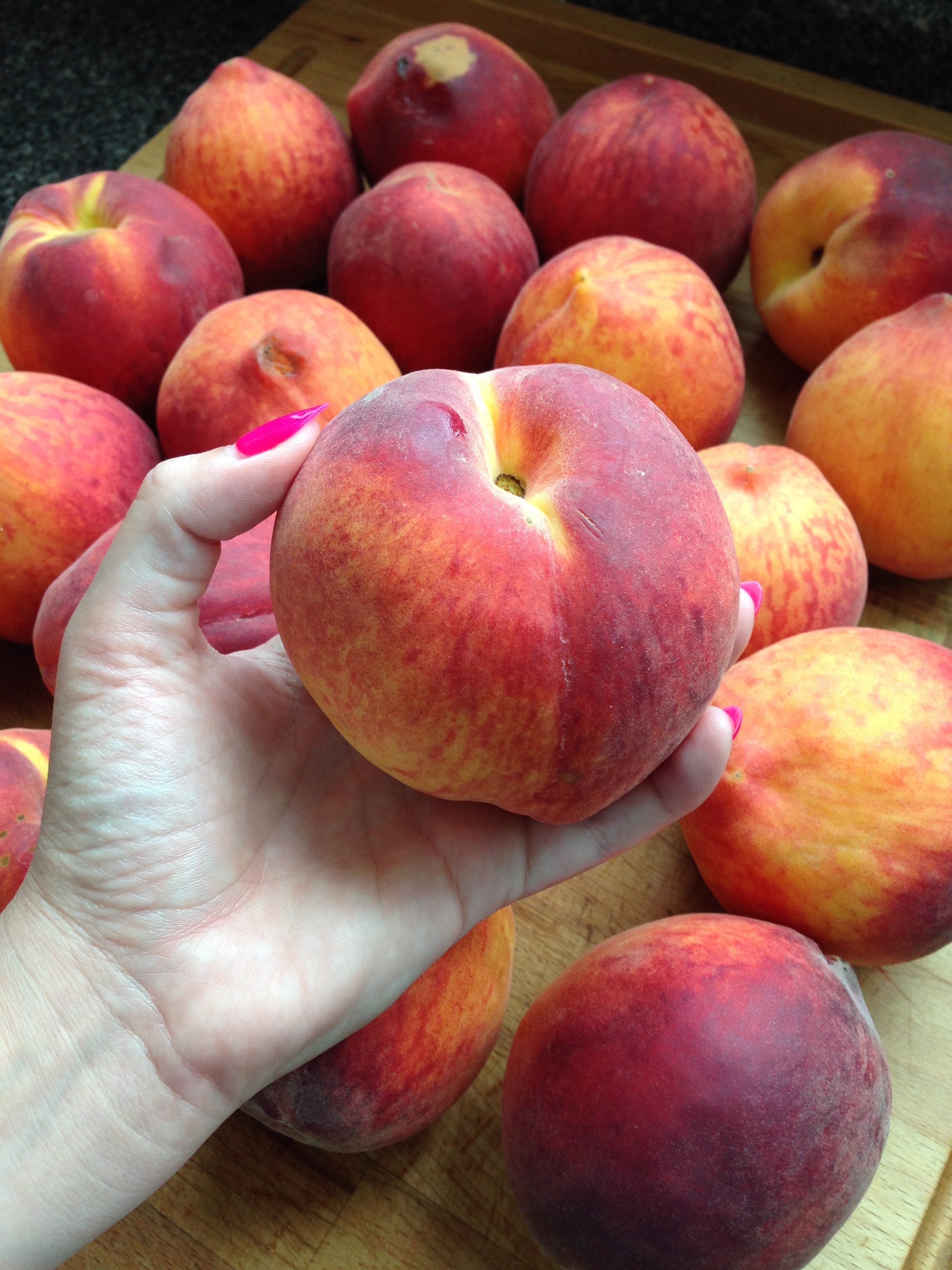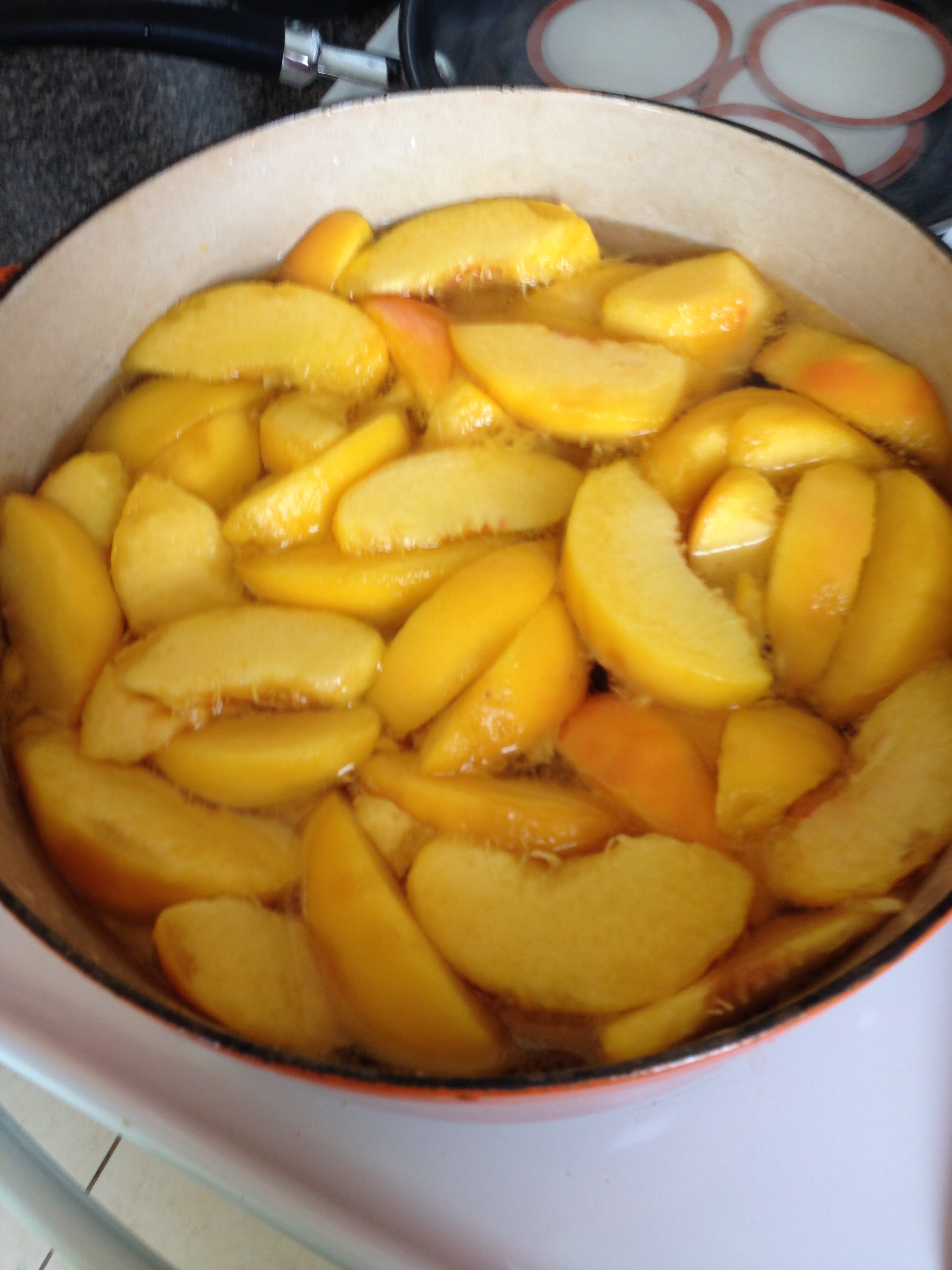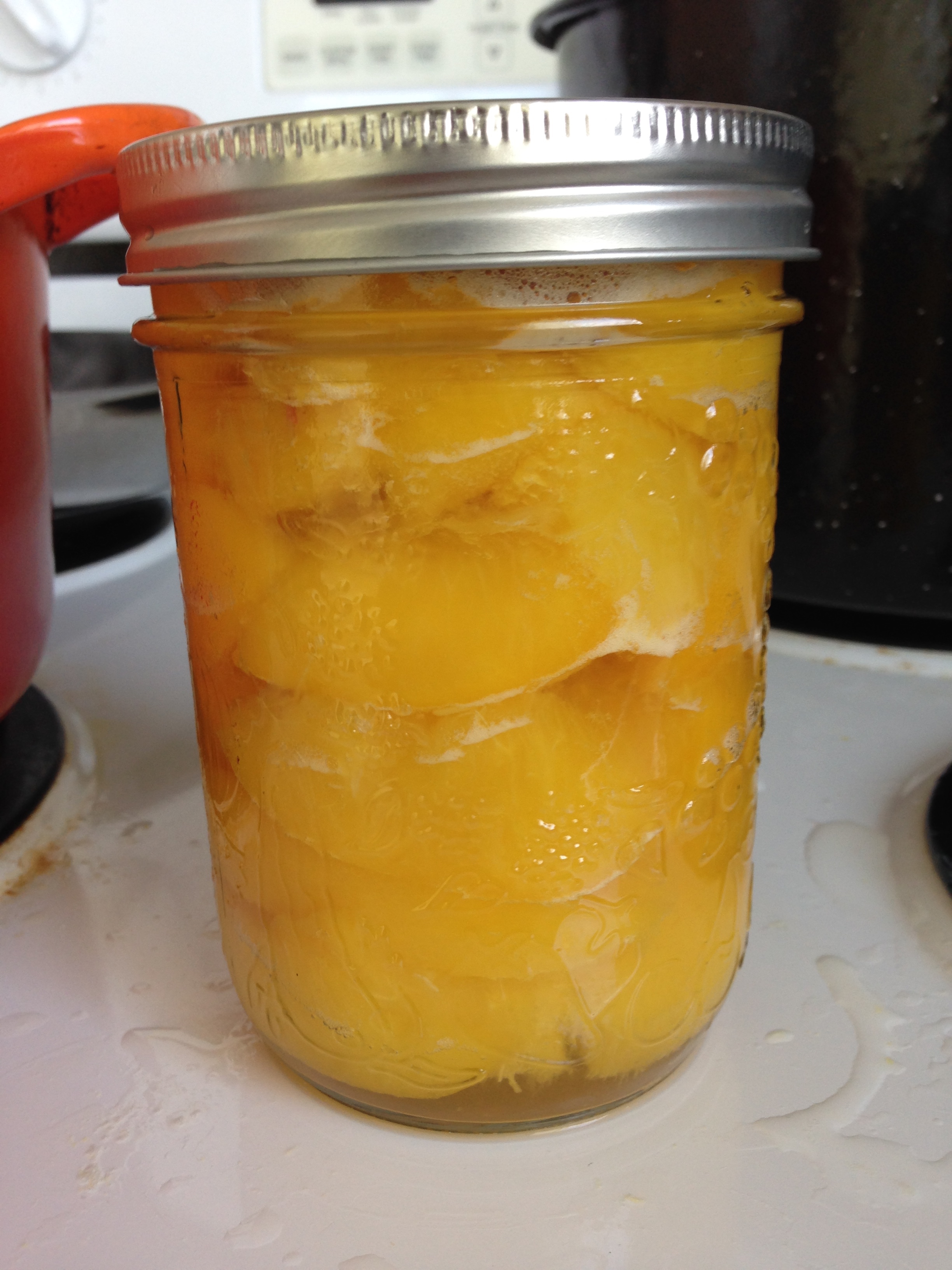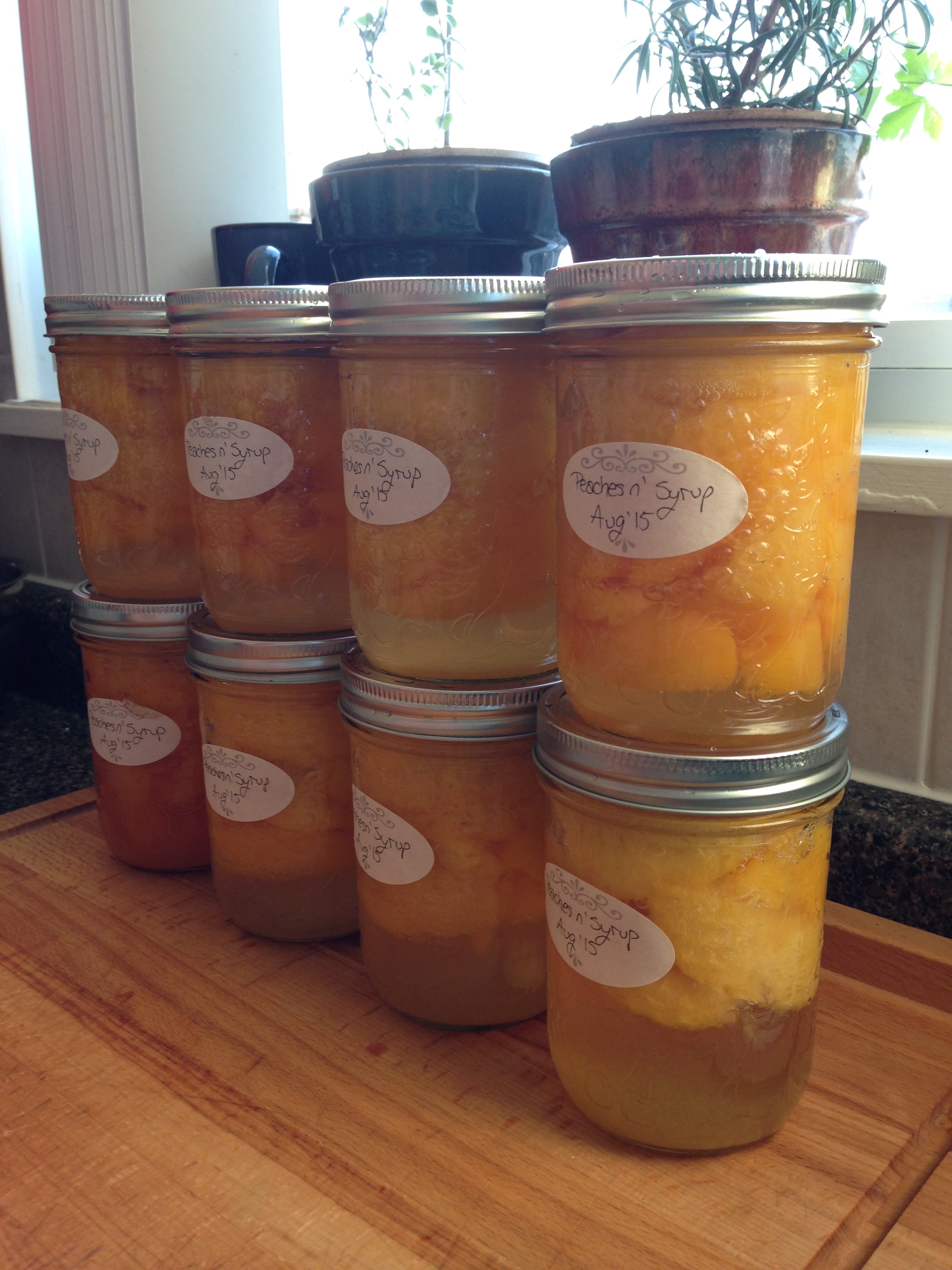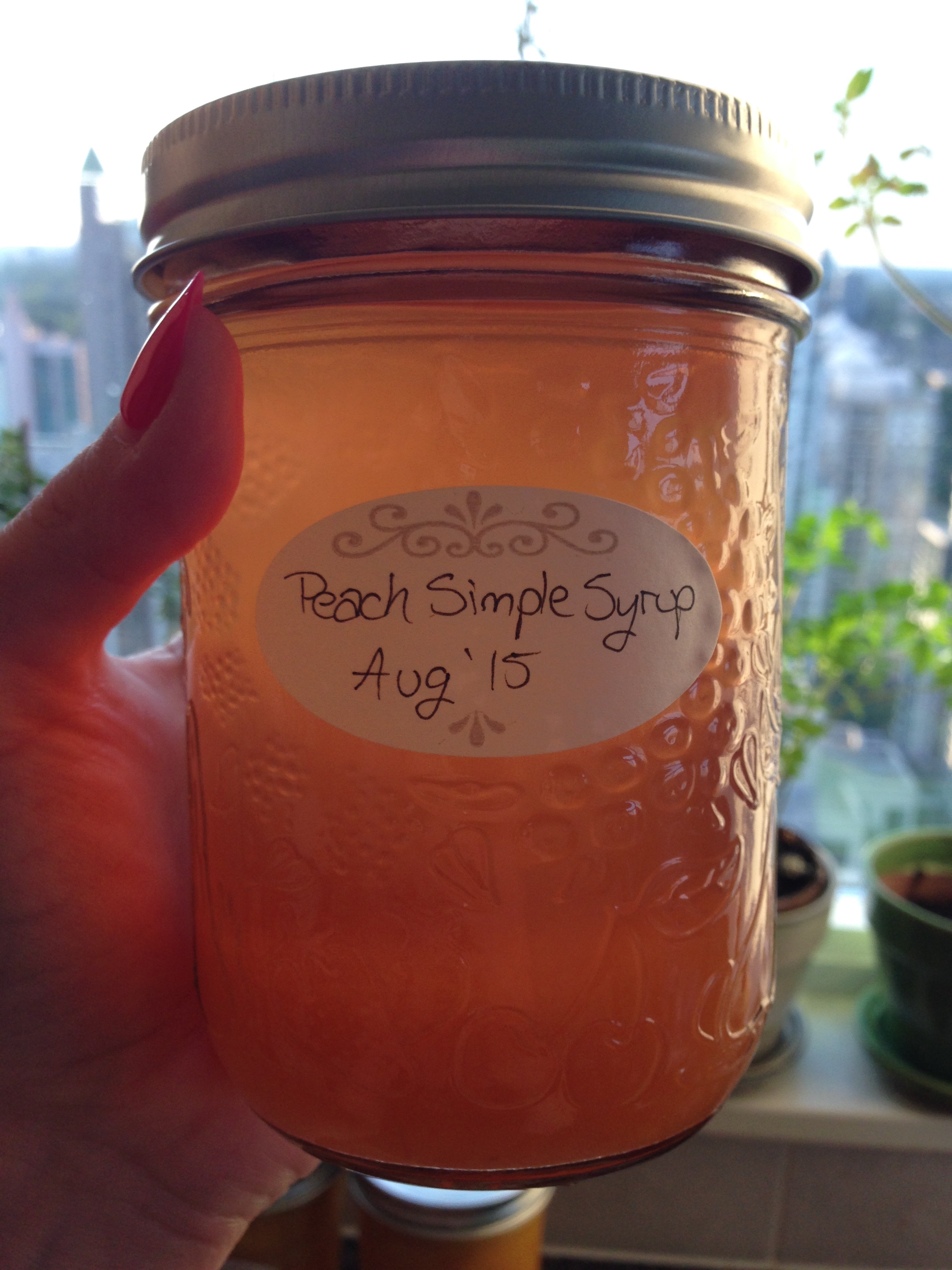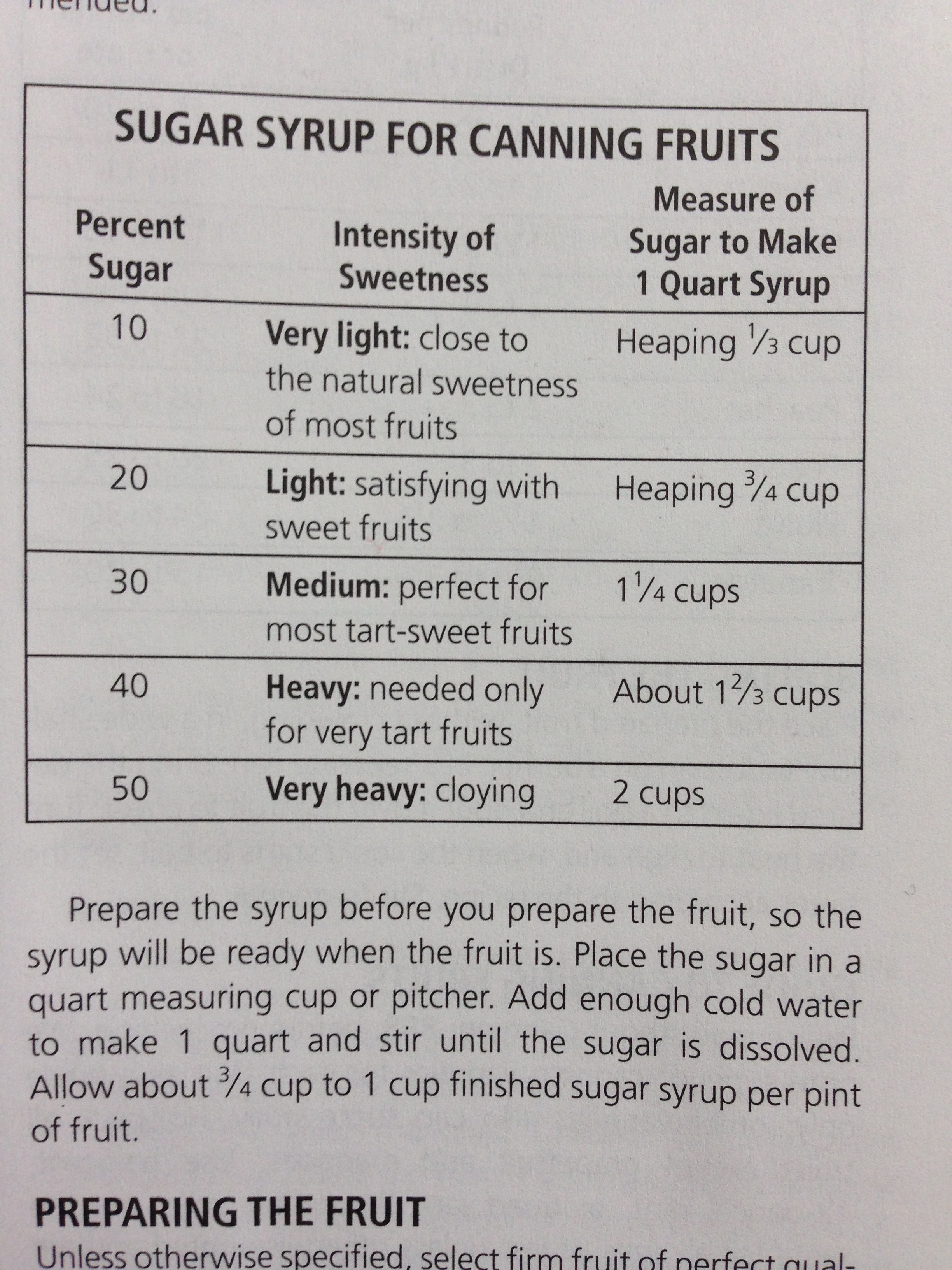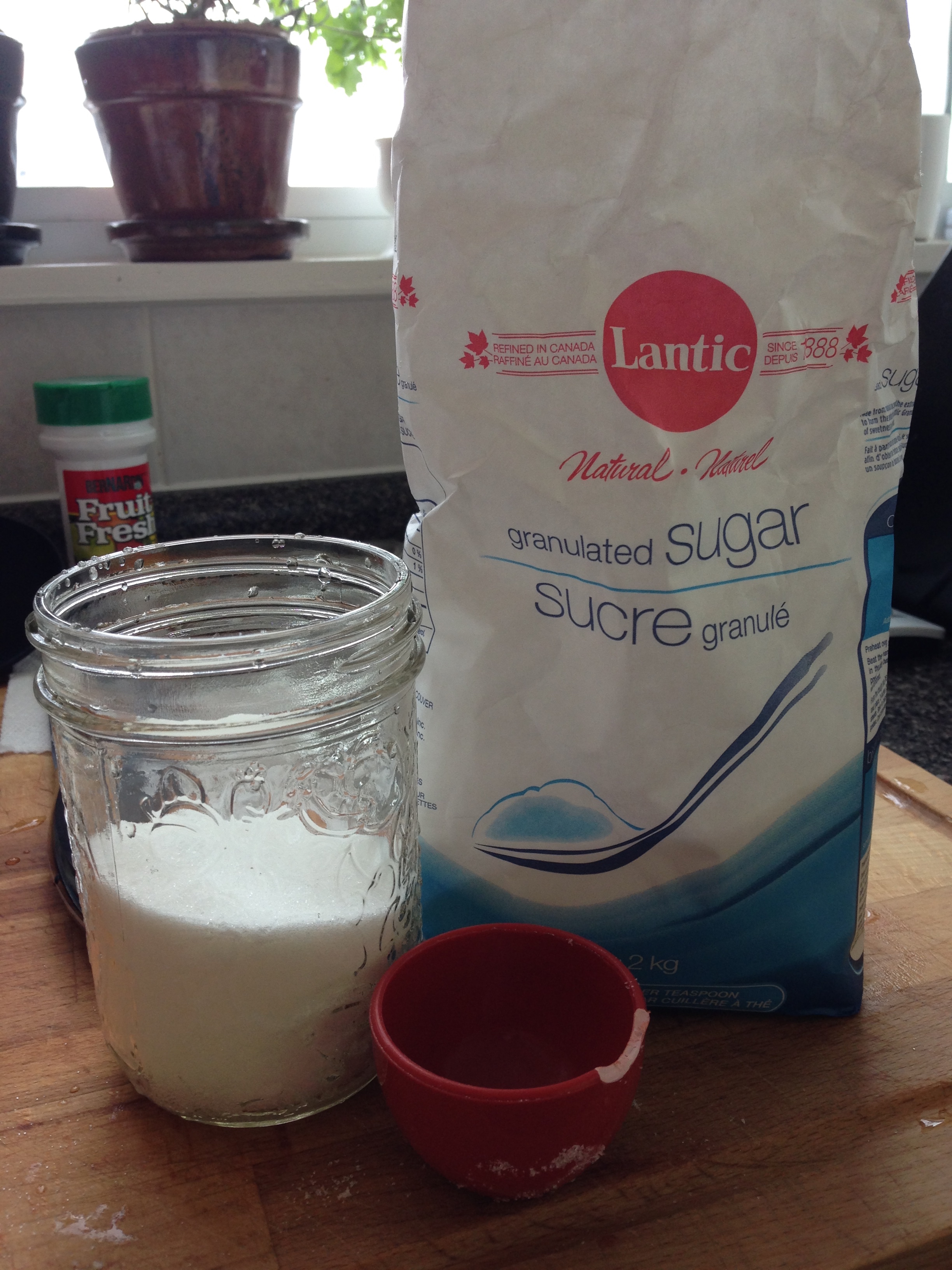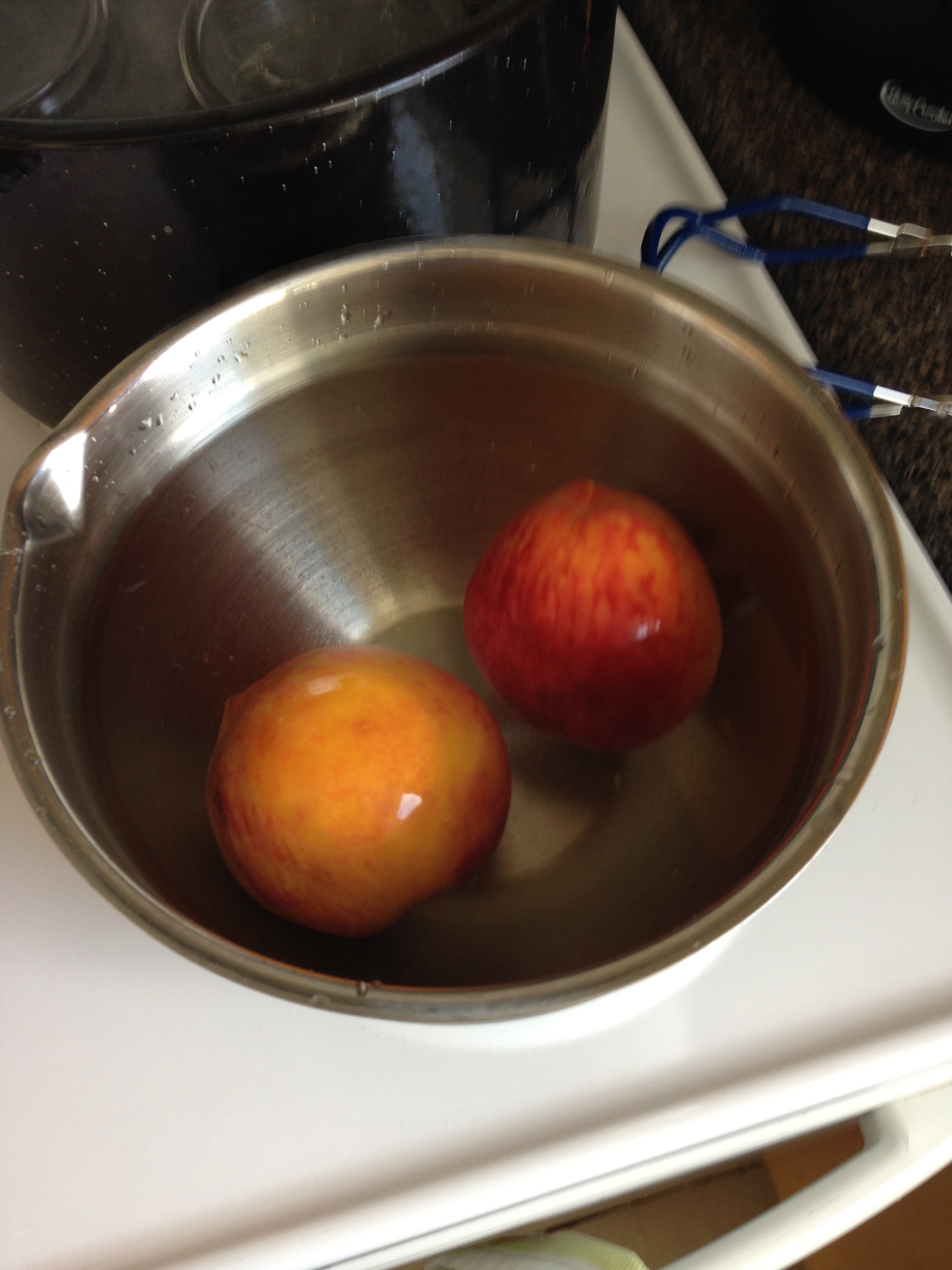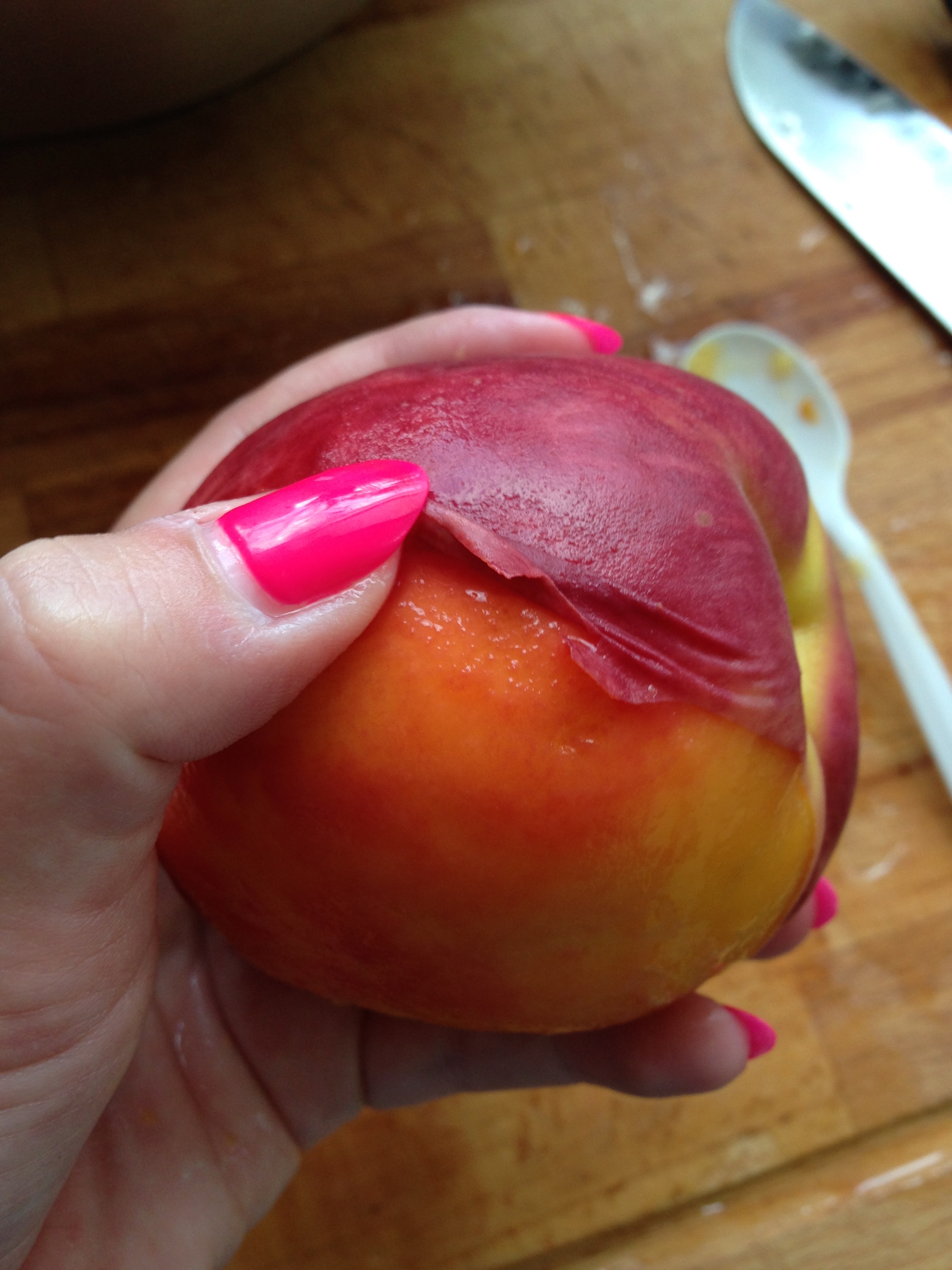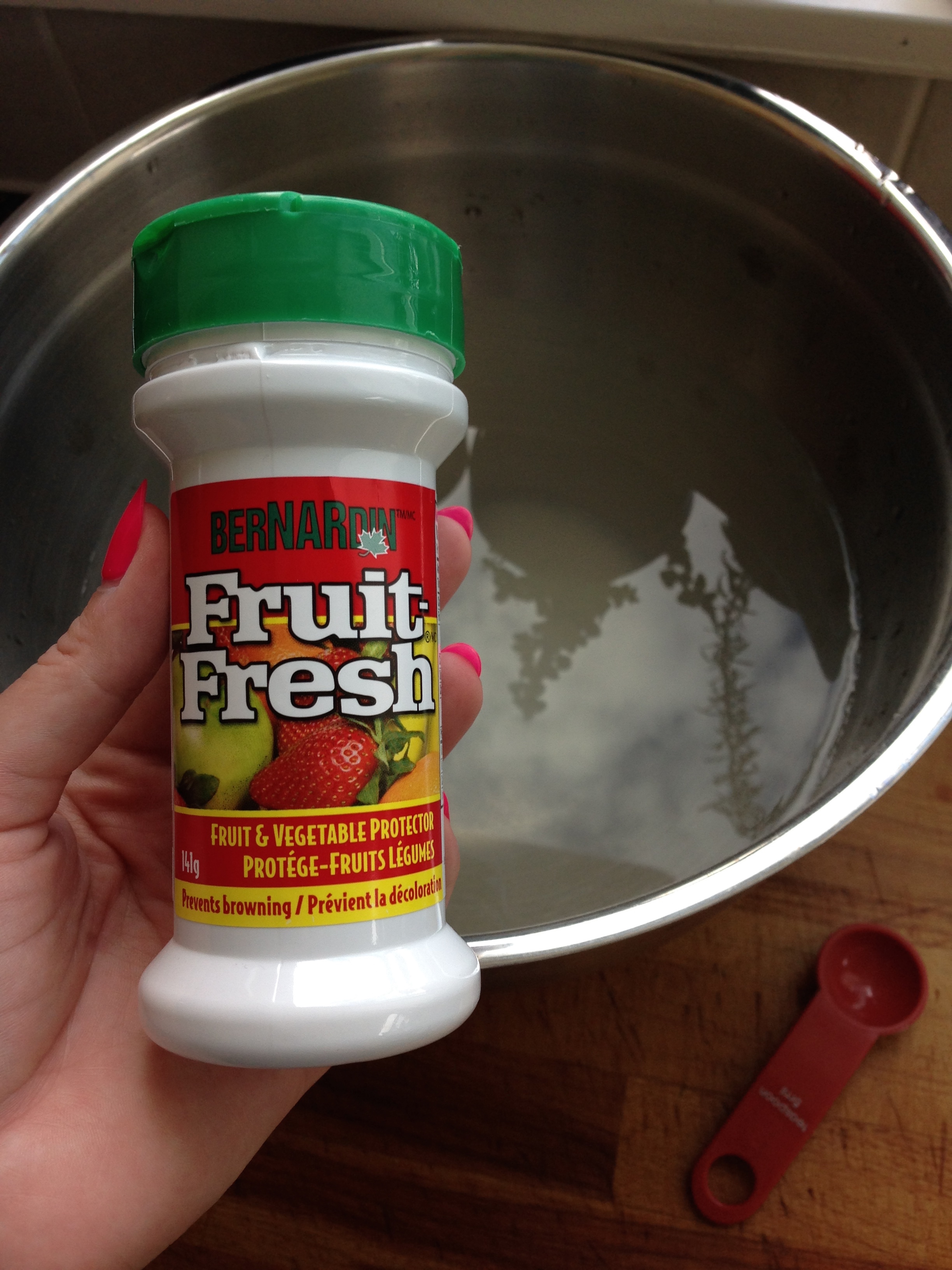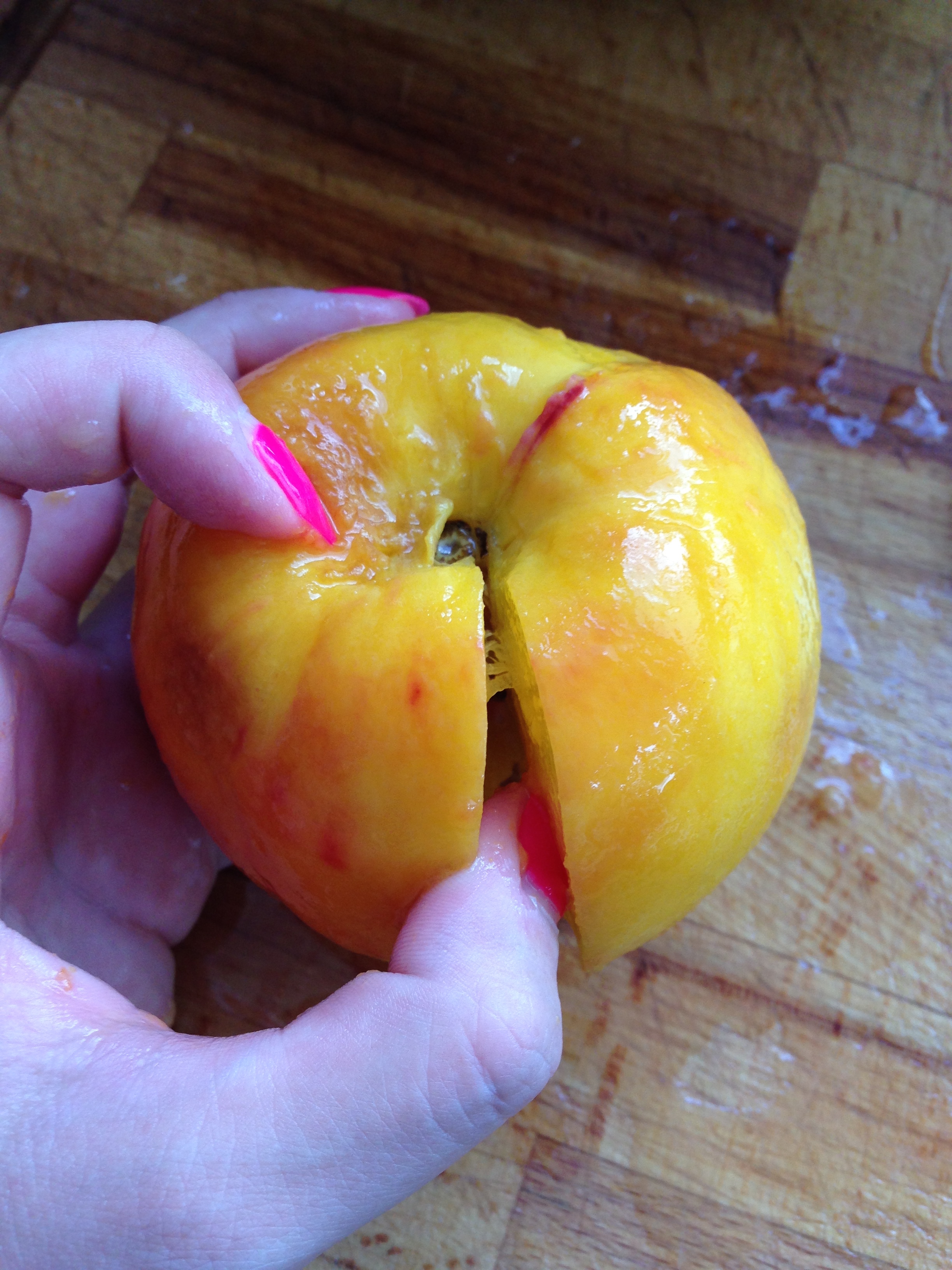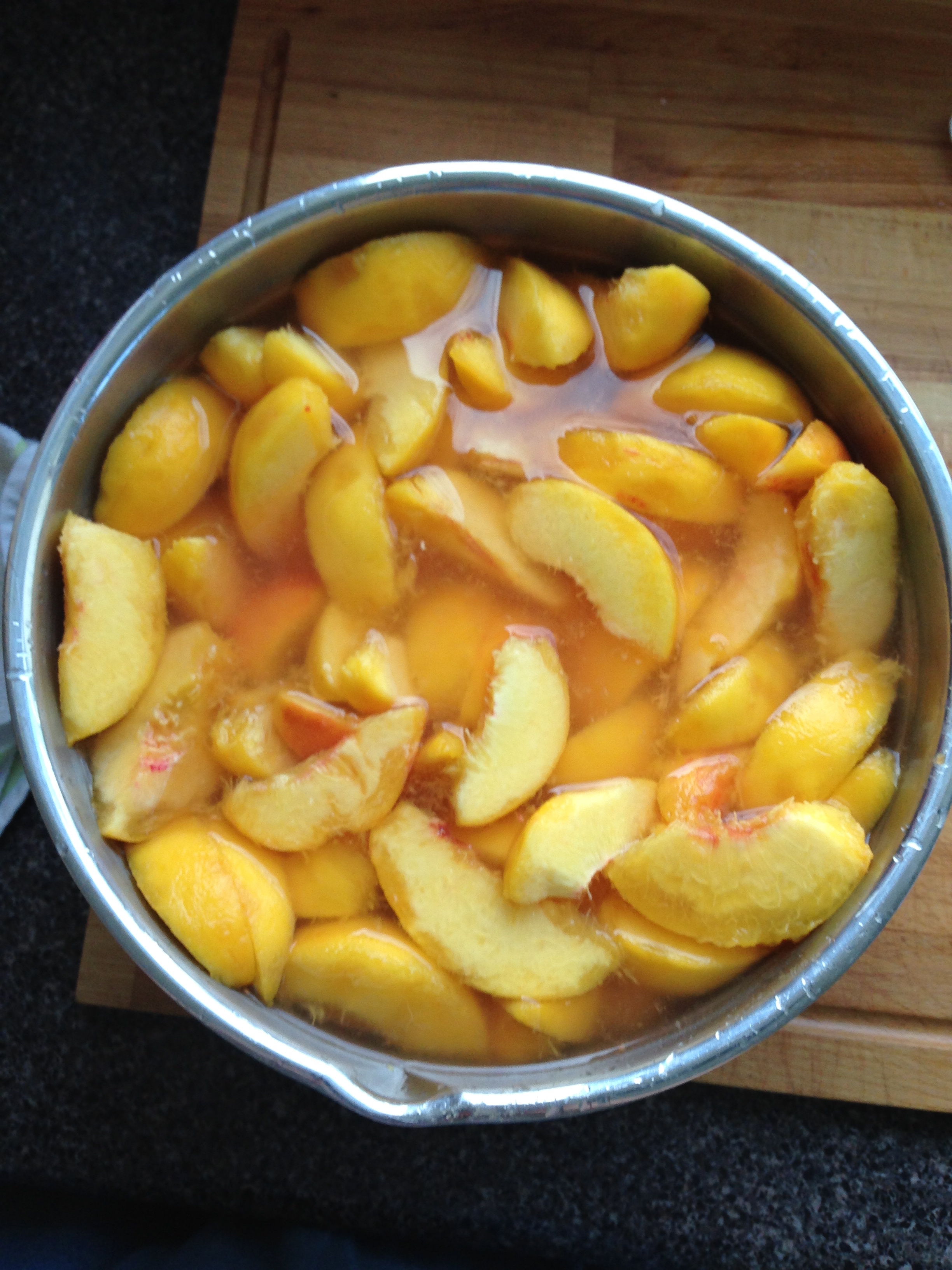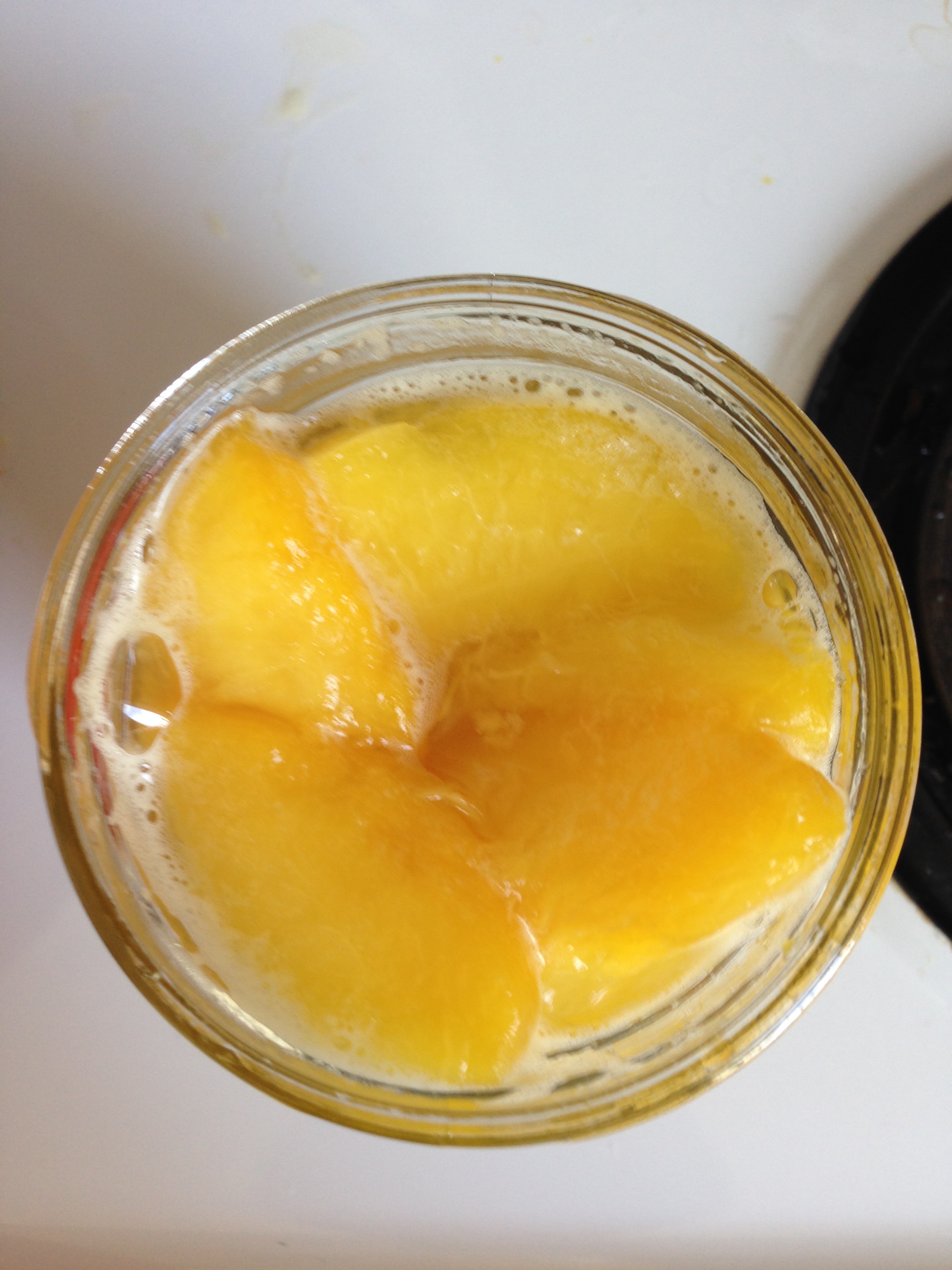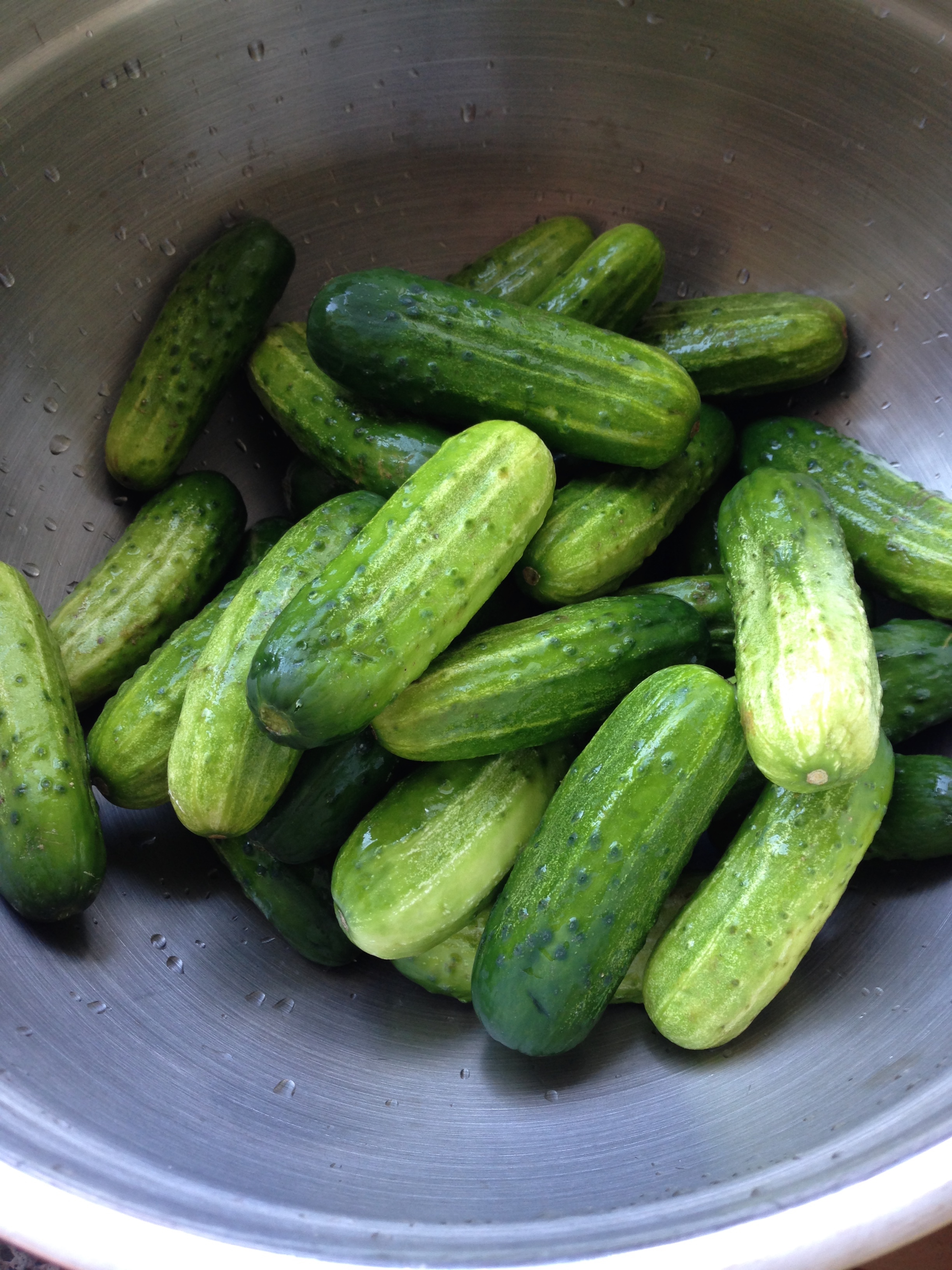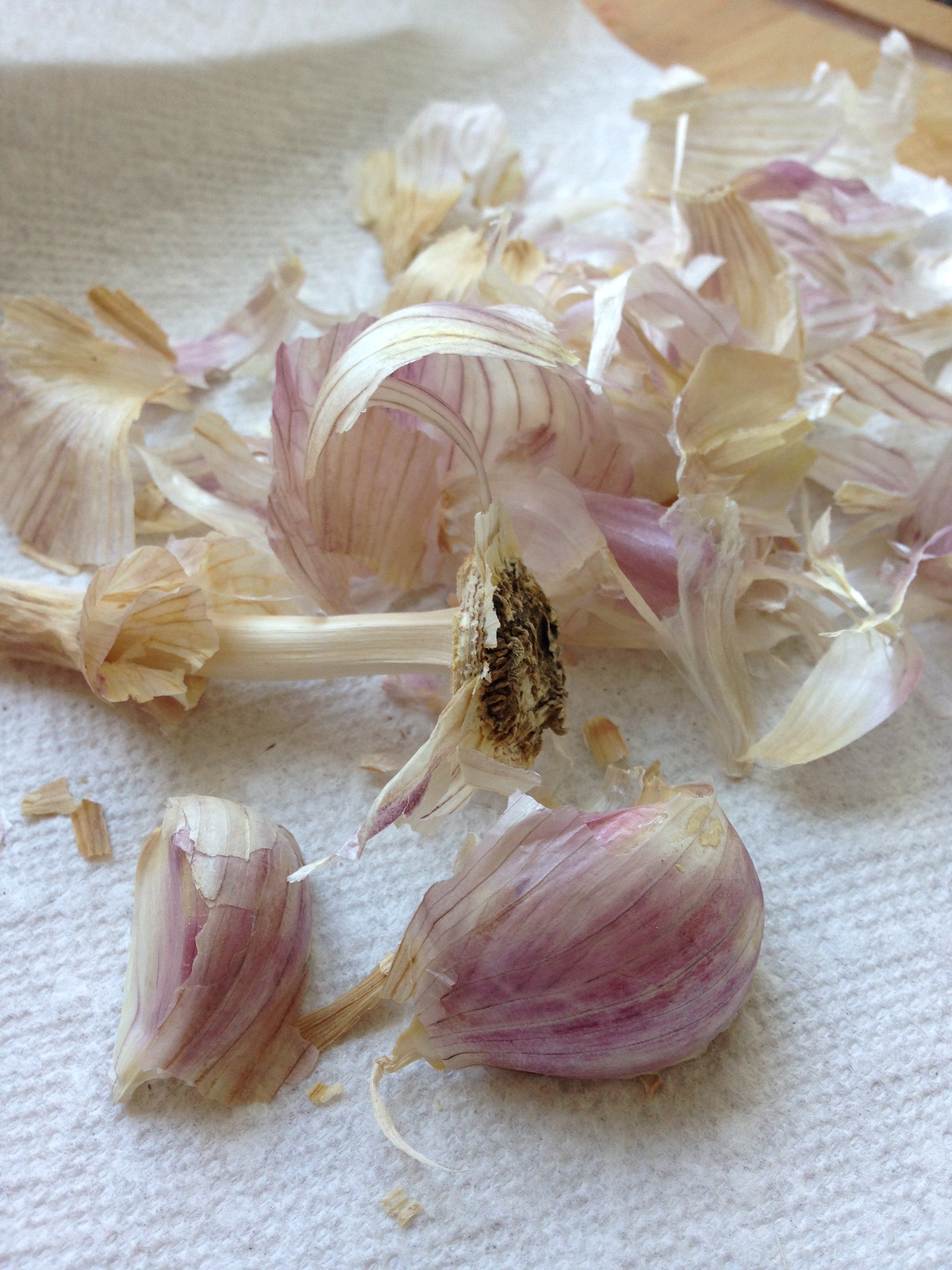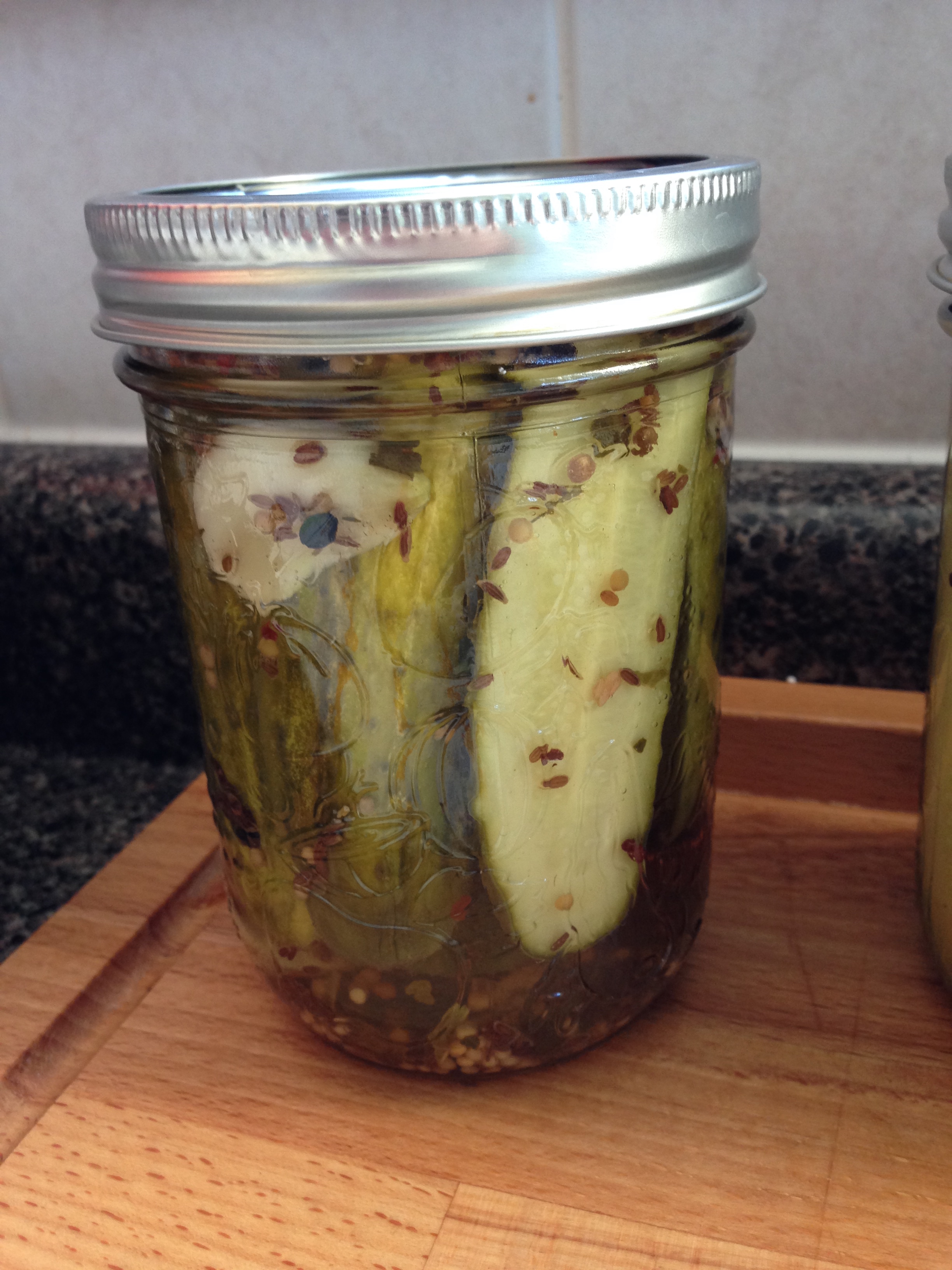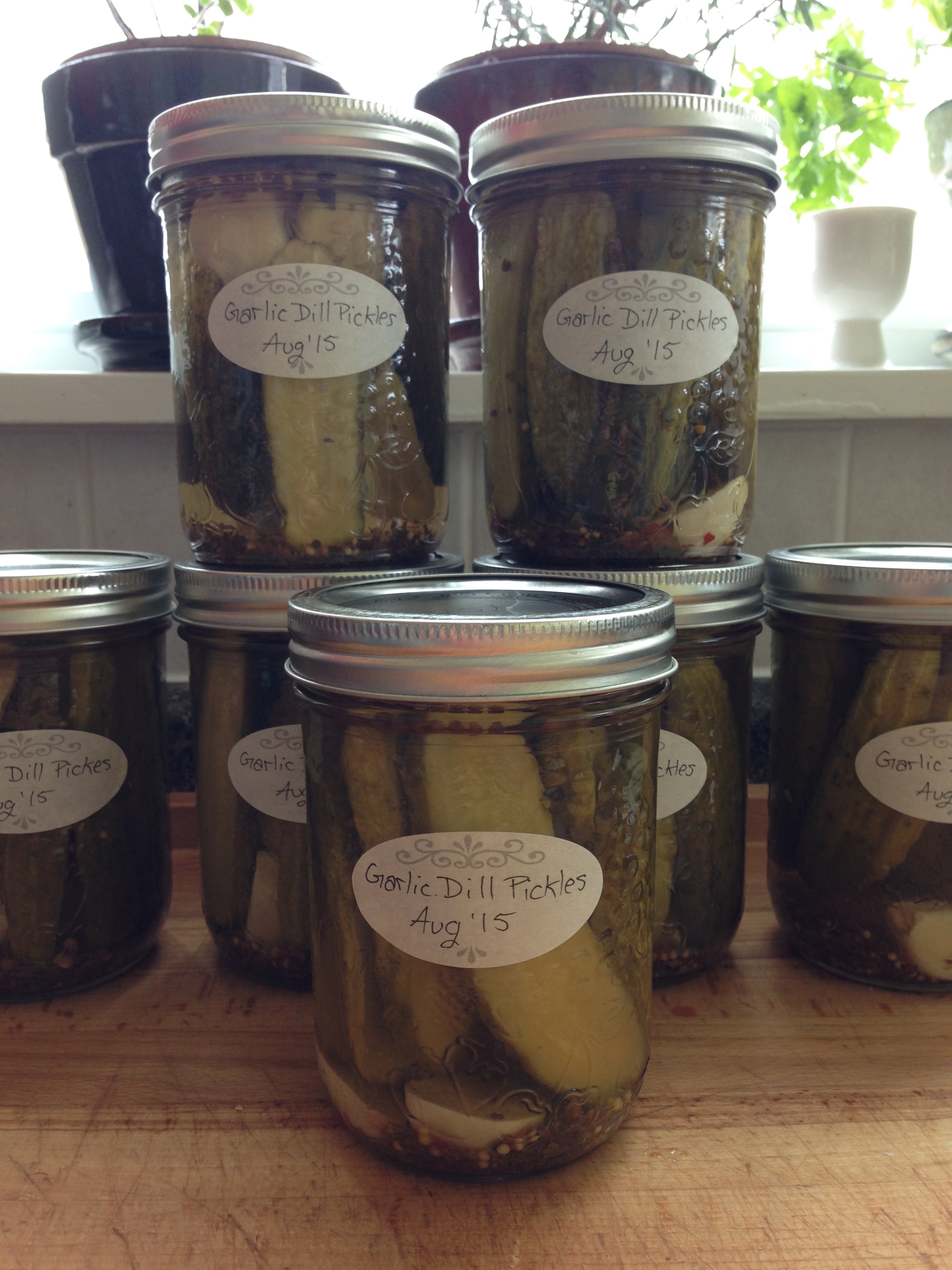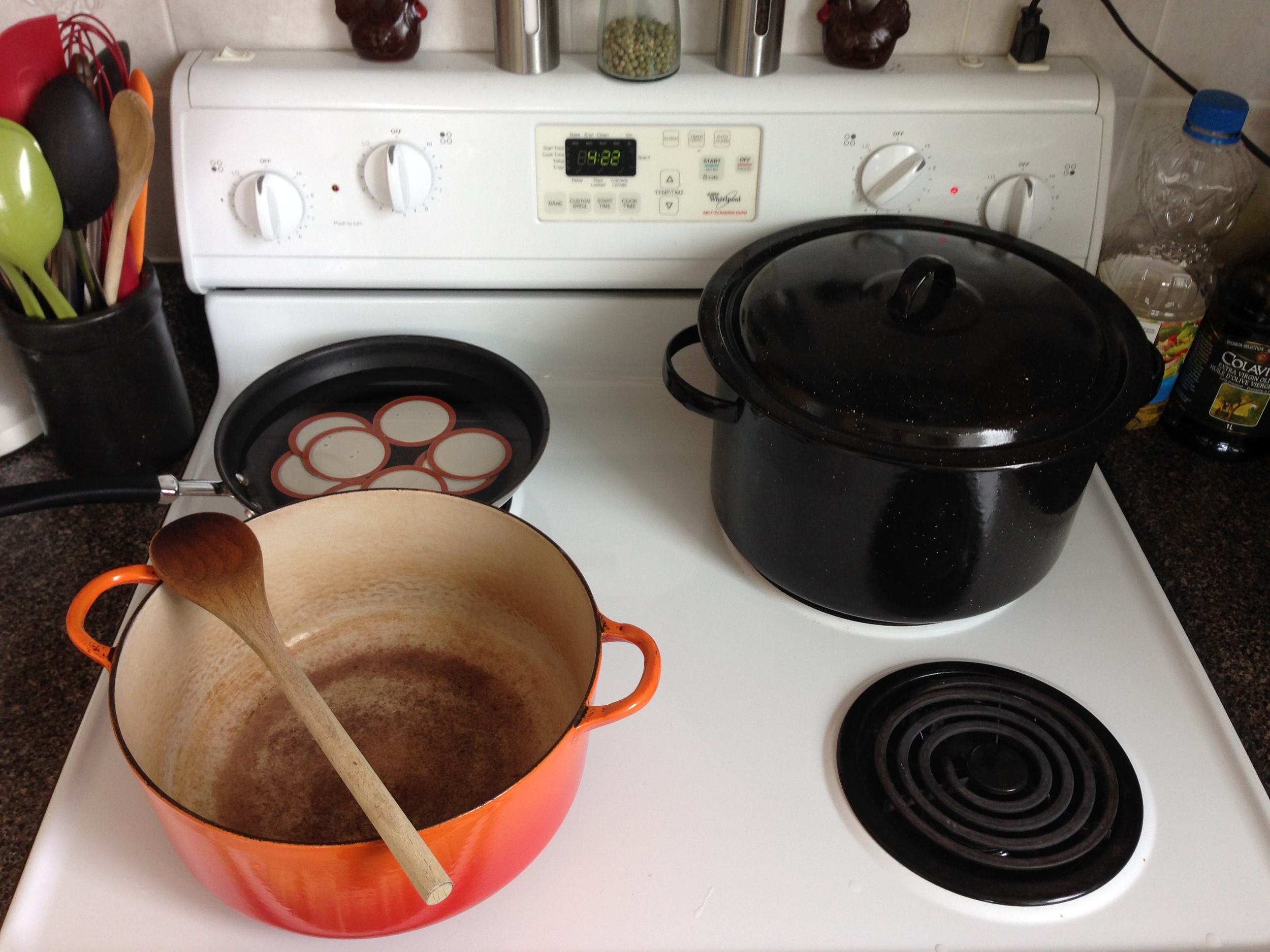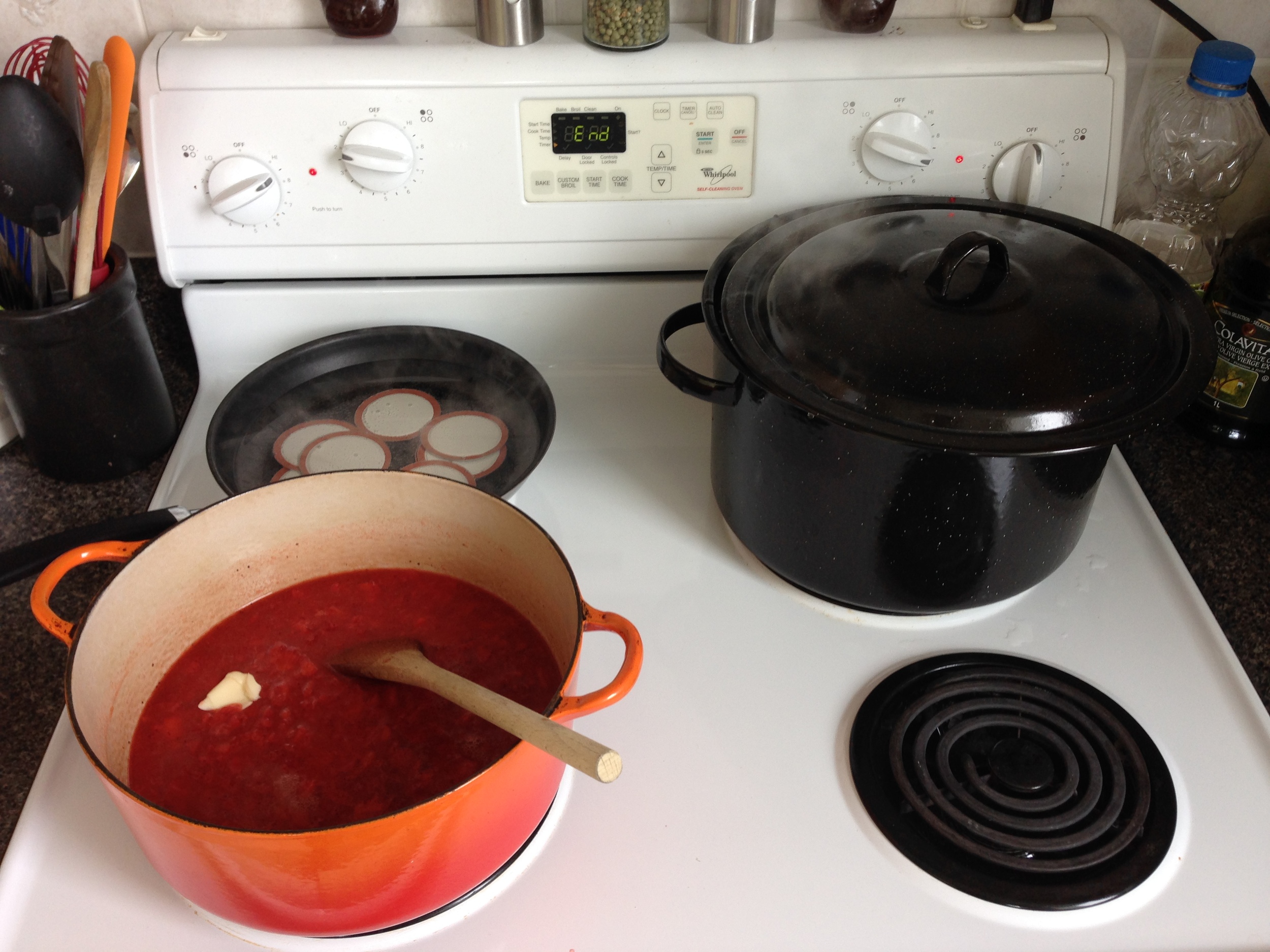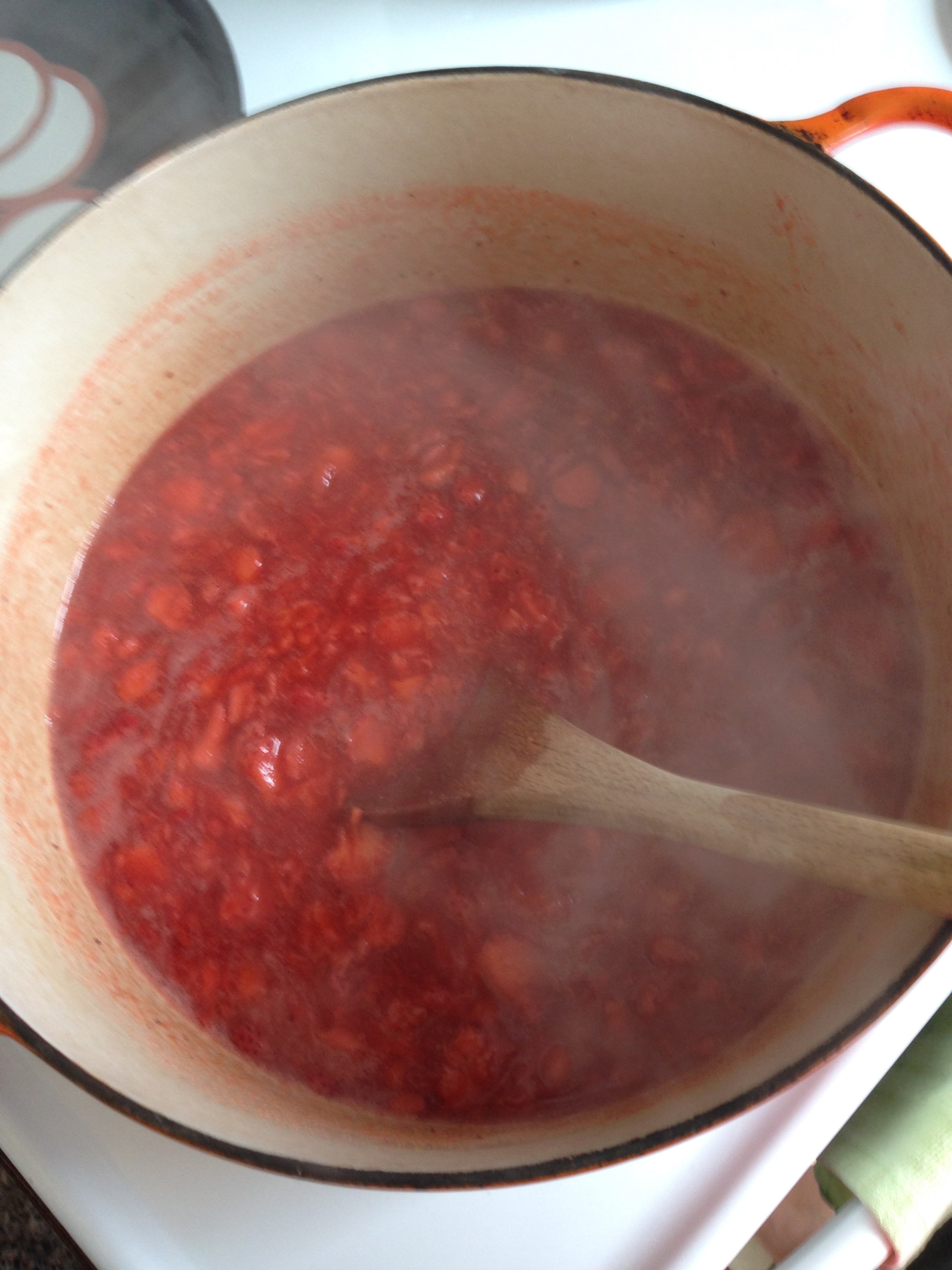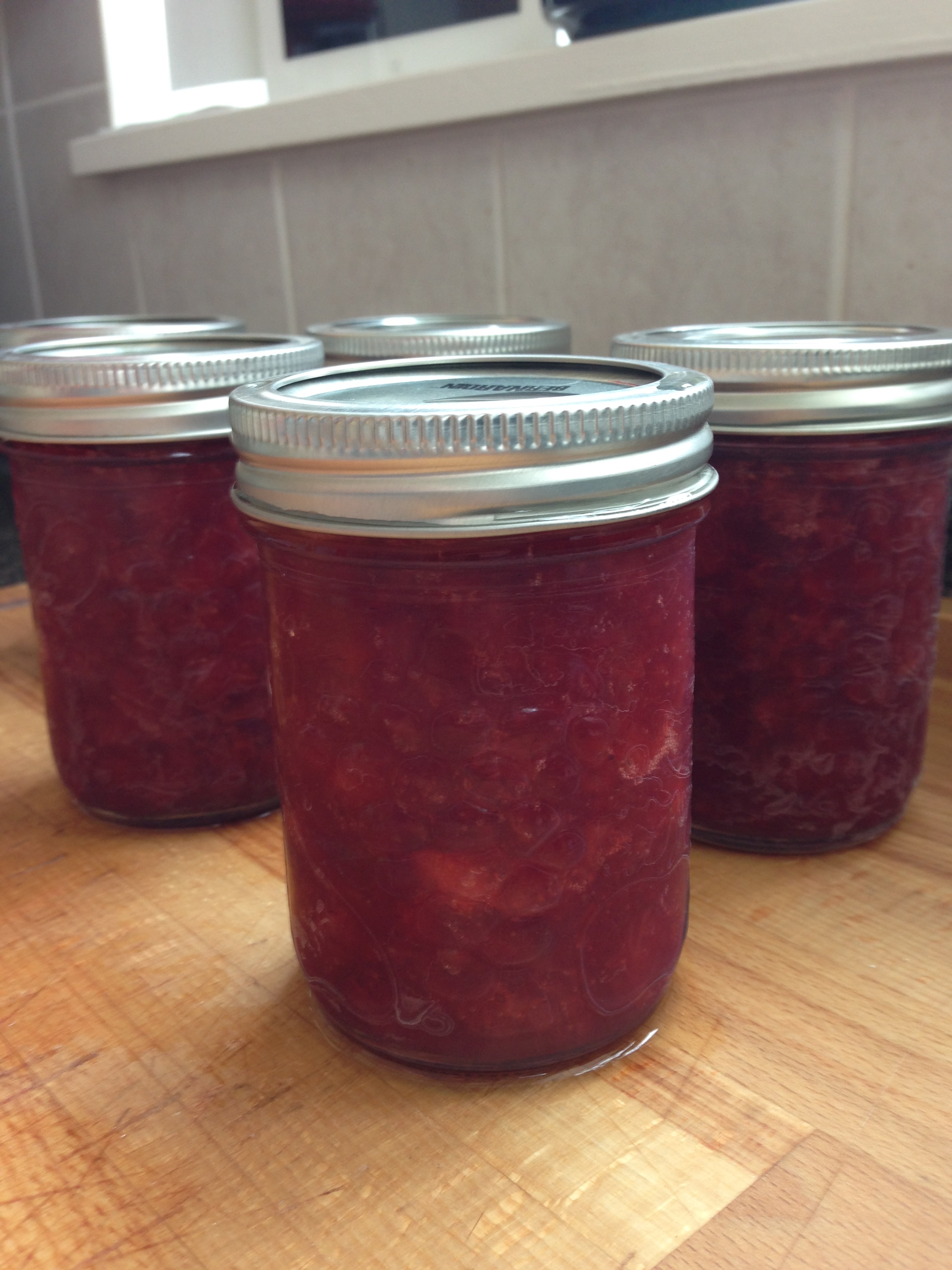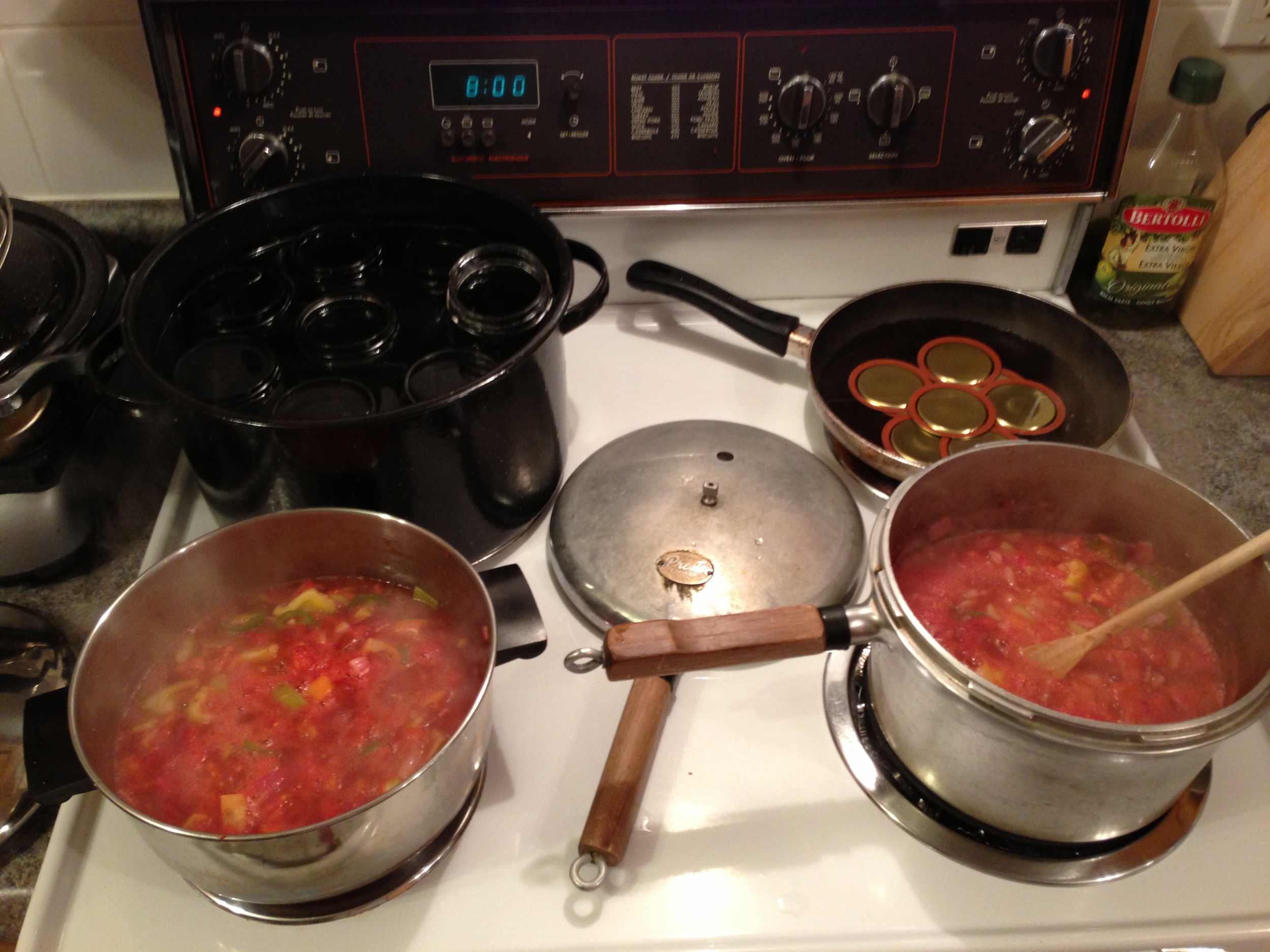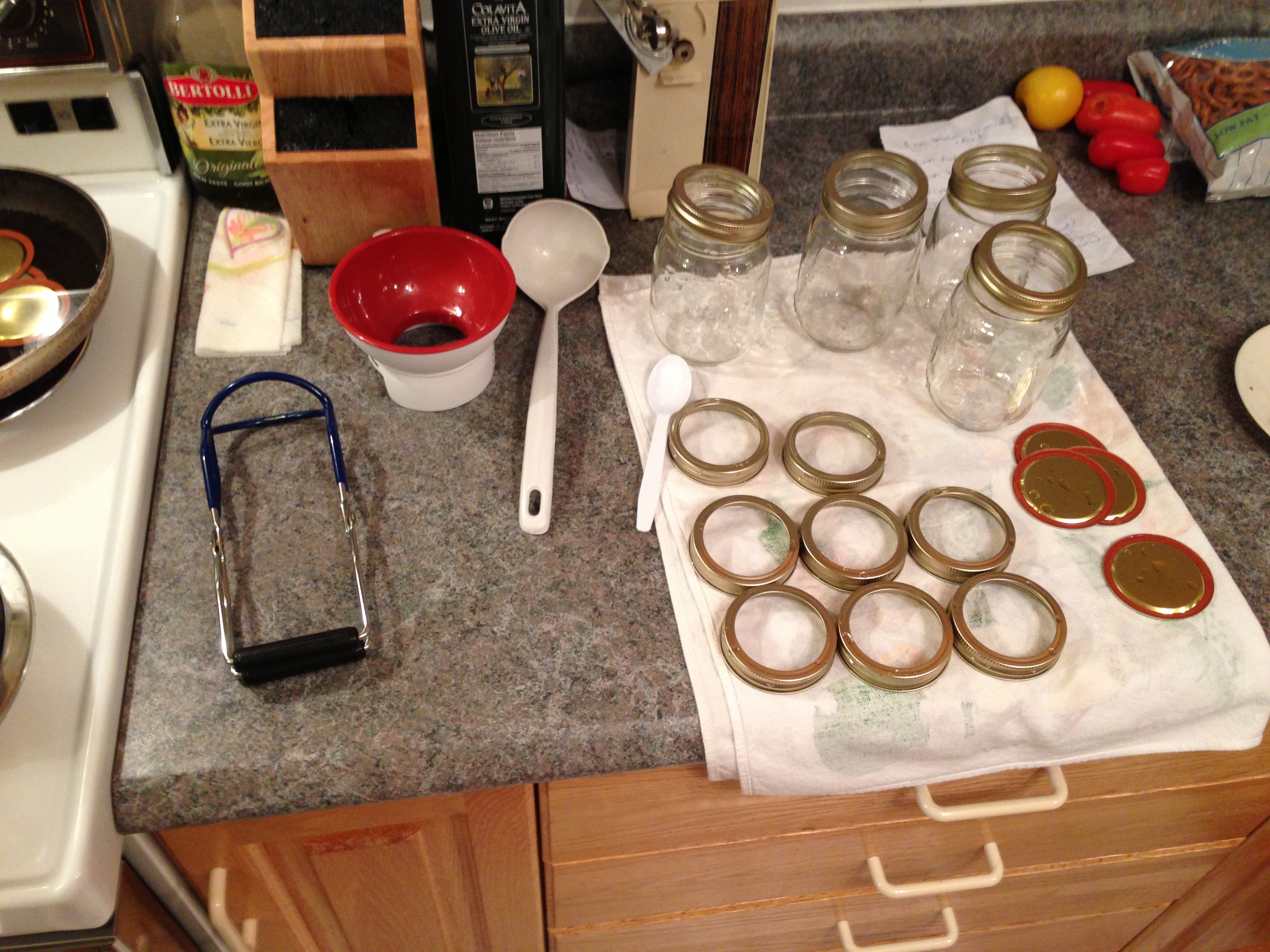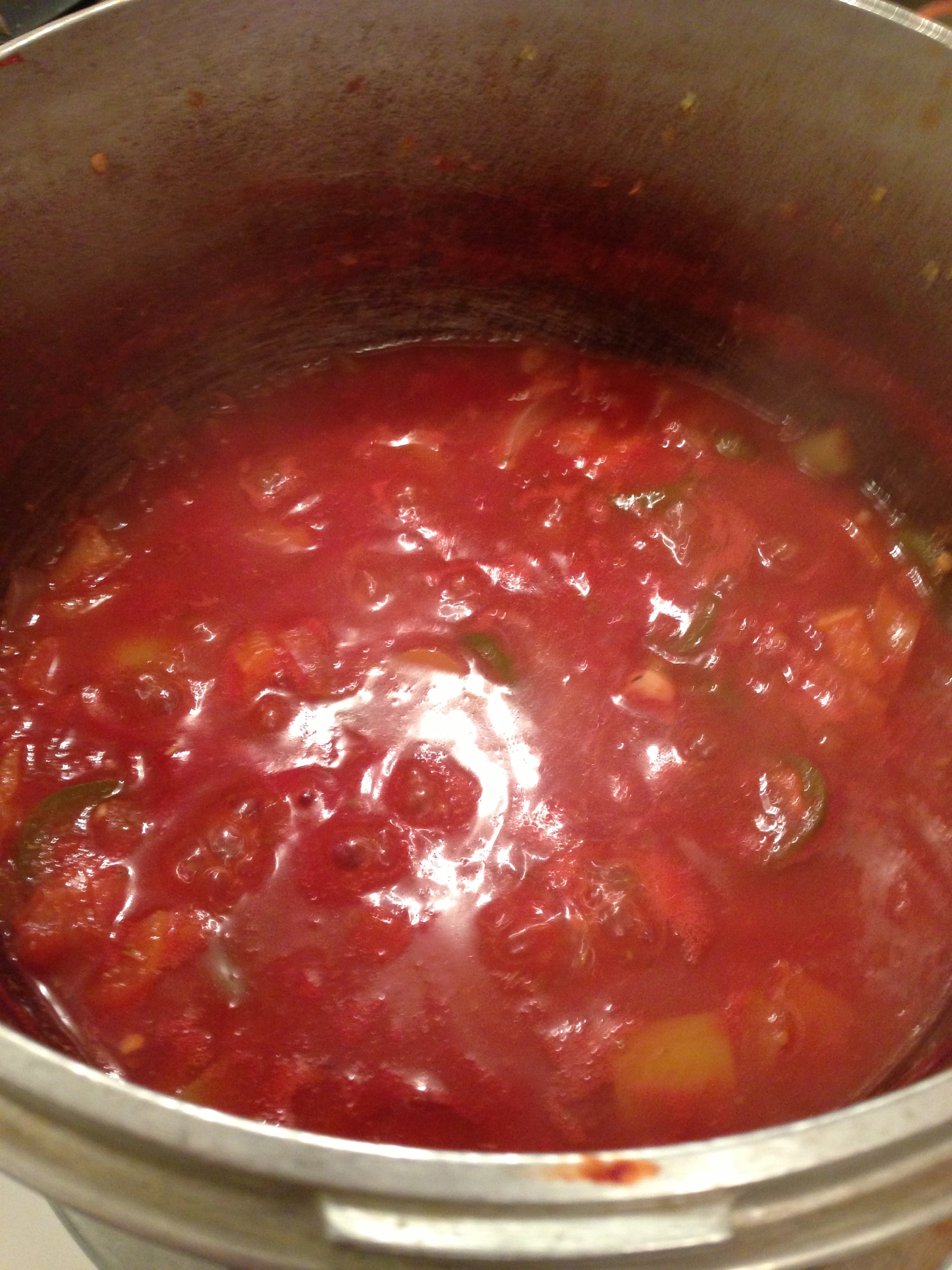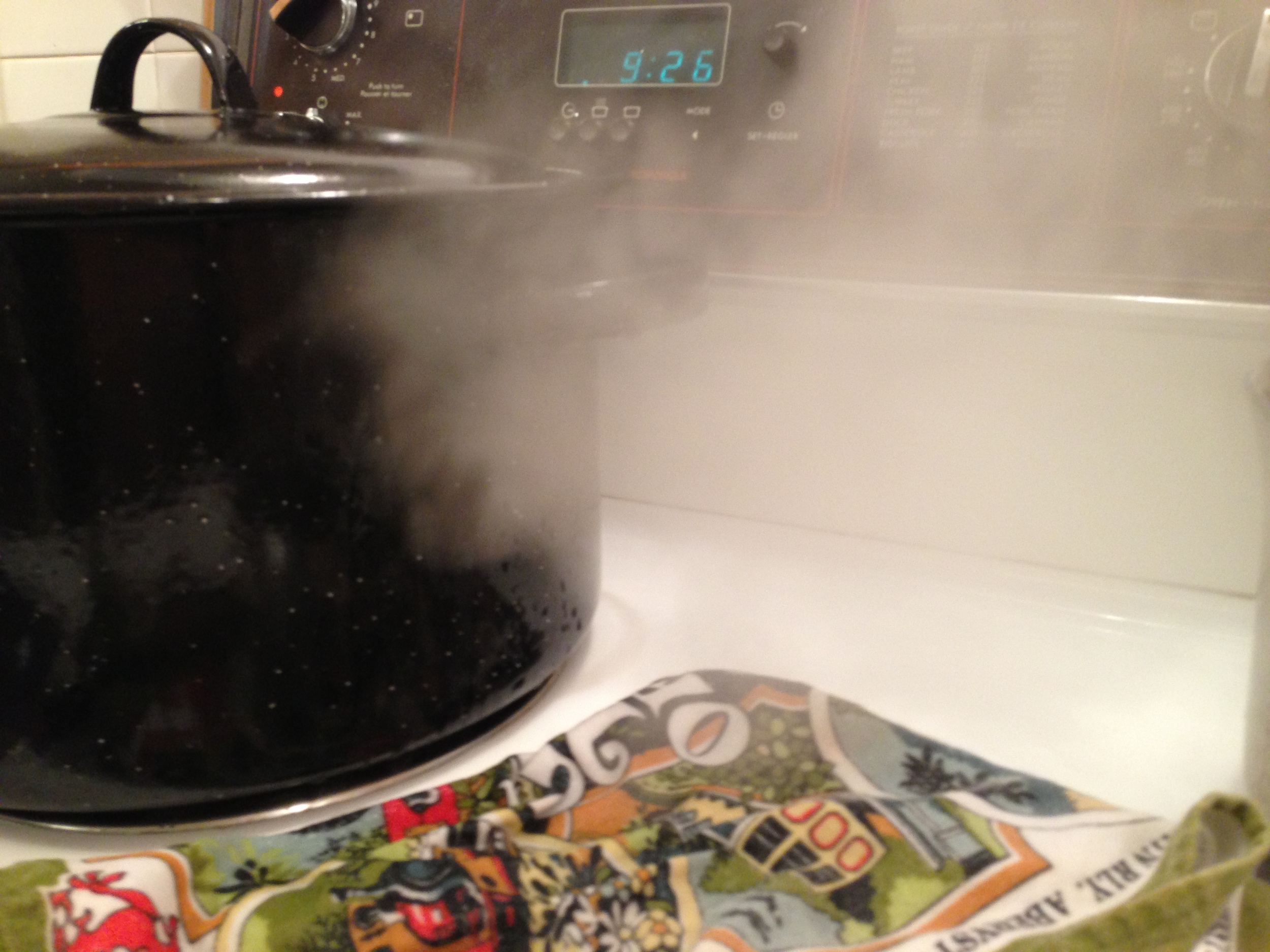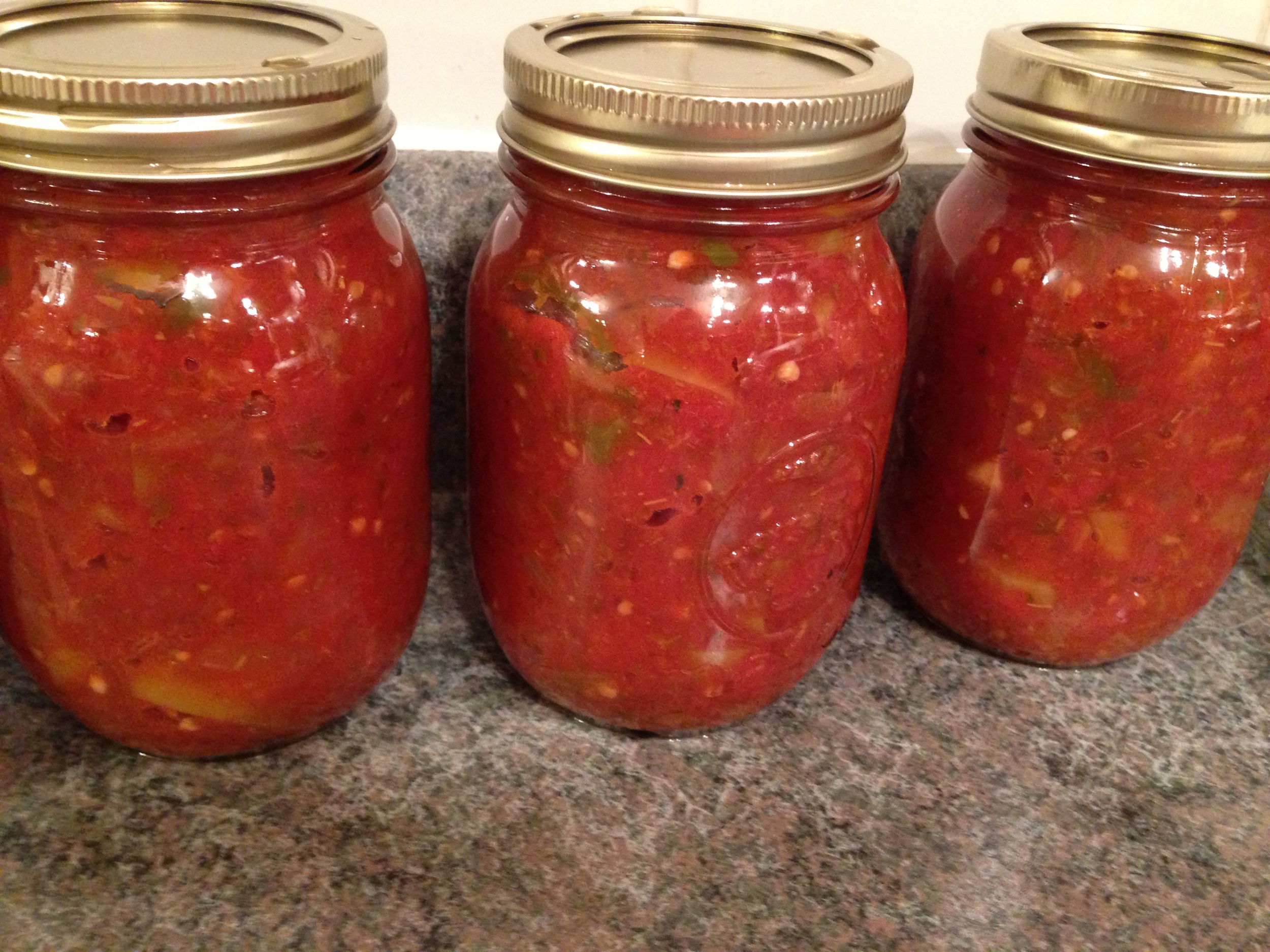
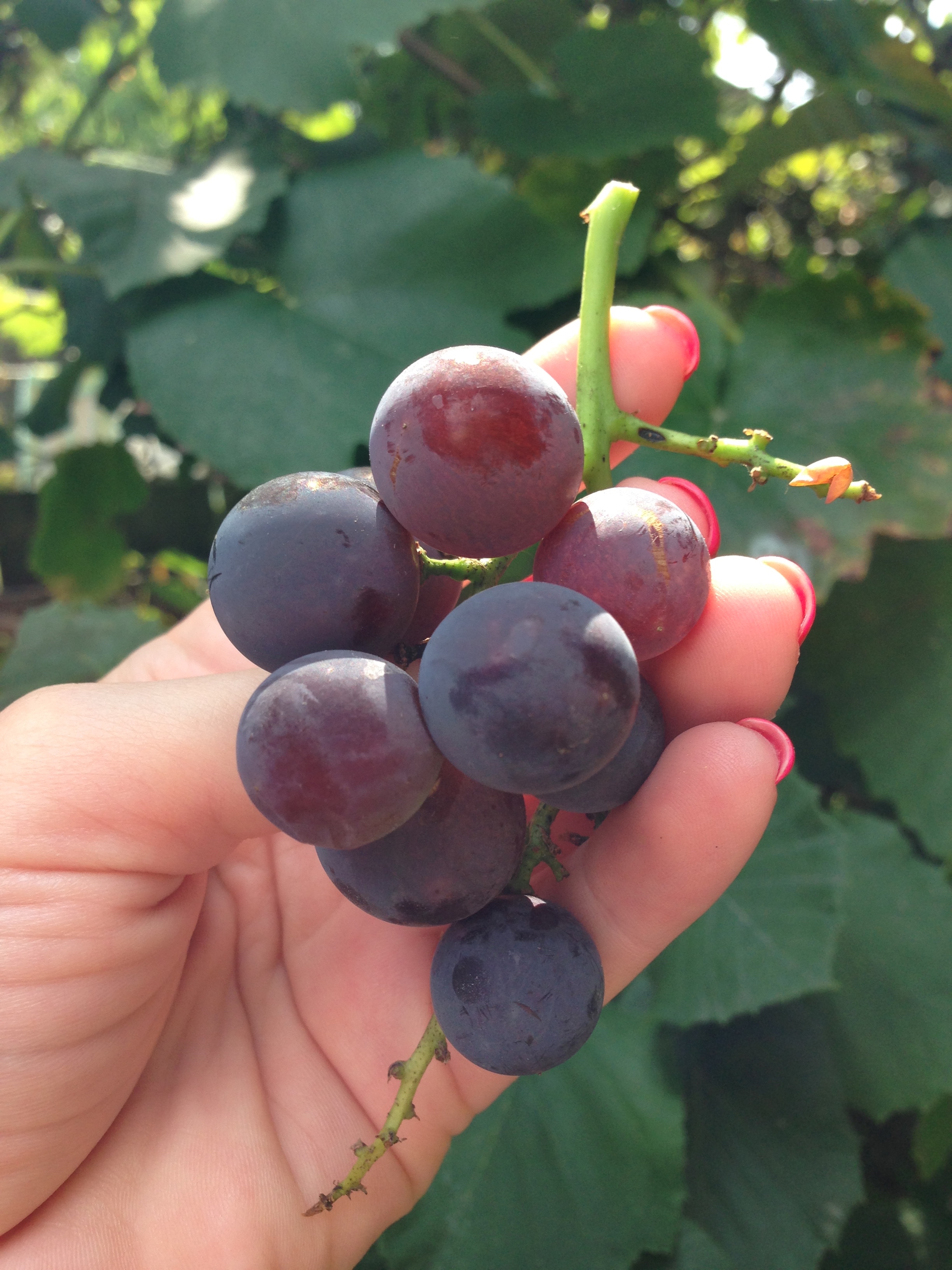
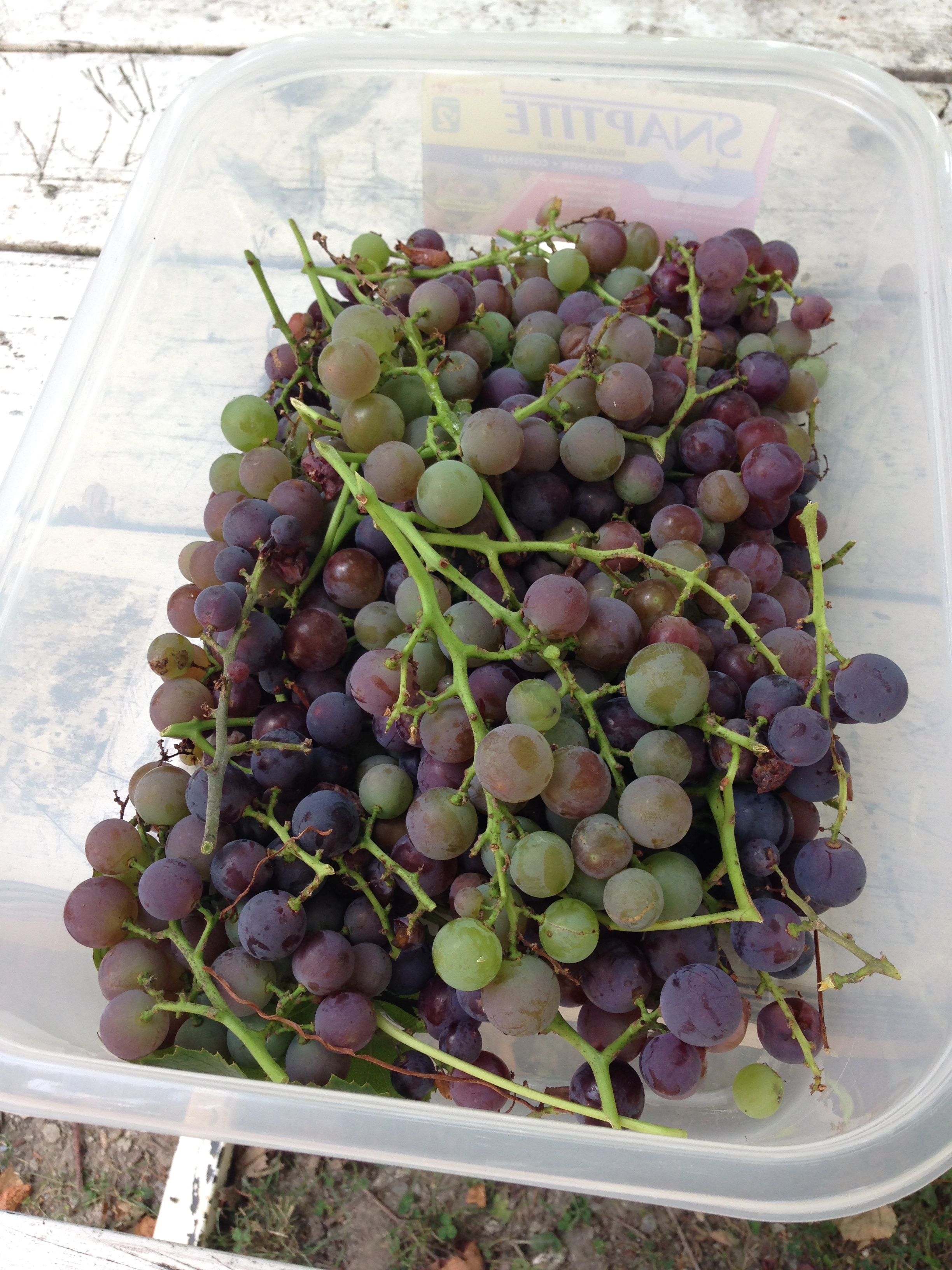

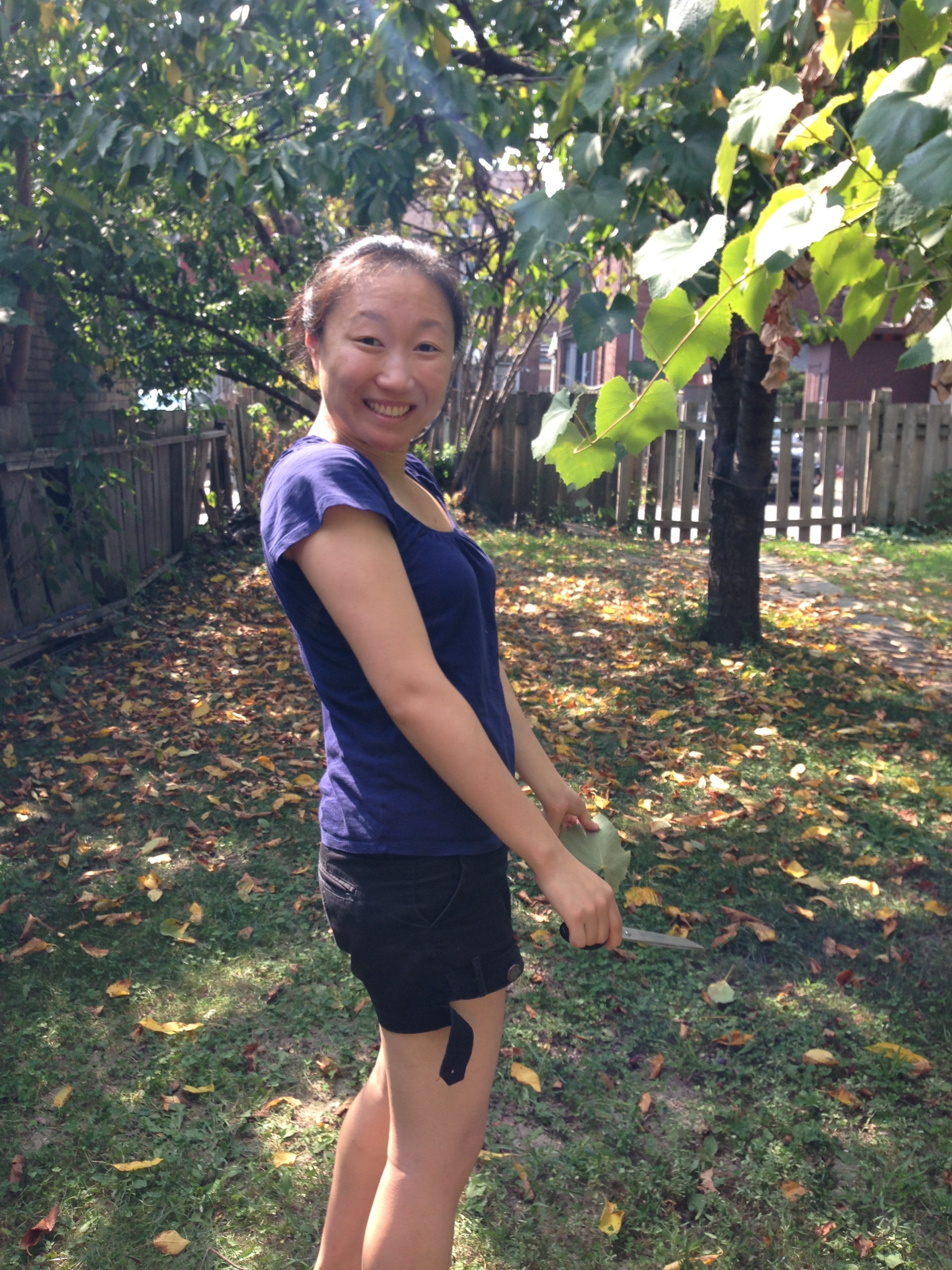
Born and raised in Alberta, I find it extremely weird to find fruit trees that aren't apple trees in peoples back yards. I'm getting used to this idea that there are commonly pear, lemon, cherry, and concord grape trees throughout most neighbourhoods. Heck. I'm getting more used to it now because it means I can foray into a world of otherwise unthought-of jams and jellies! Muaha!
My lovely lady friend Gloria let me adventure with some buddies into her and her husband's backyard fruit paradise! Grape hunting and harvesting was an afternoon affair. A successful affair. We picked all the ones we could reach and there were still a grape ton high up above out heads. (Yes. Grape Tree. Mind Blown.) Next year perhaps there will be wine to be made. First step will be get a ladder! XD
We collected all we could and attempted to not nom them all. There were master plans for these grapes: Grape Jelly.
So I got the grapes home and (eventually) set to work.
Grape Jelly
5 cups juice
1 packet pectin (I used Bernardin)
6 cups sugar

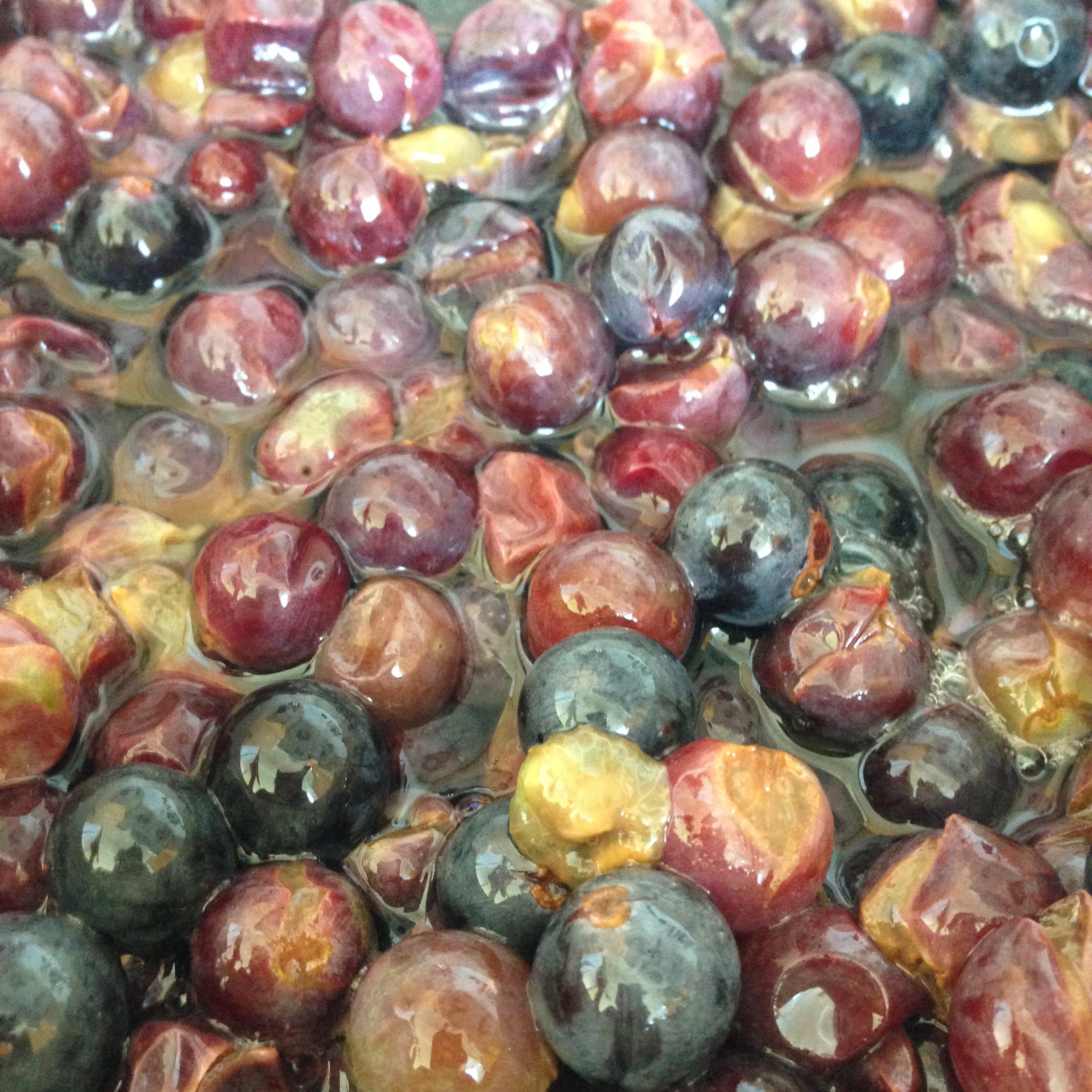
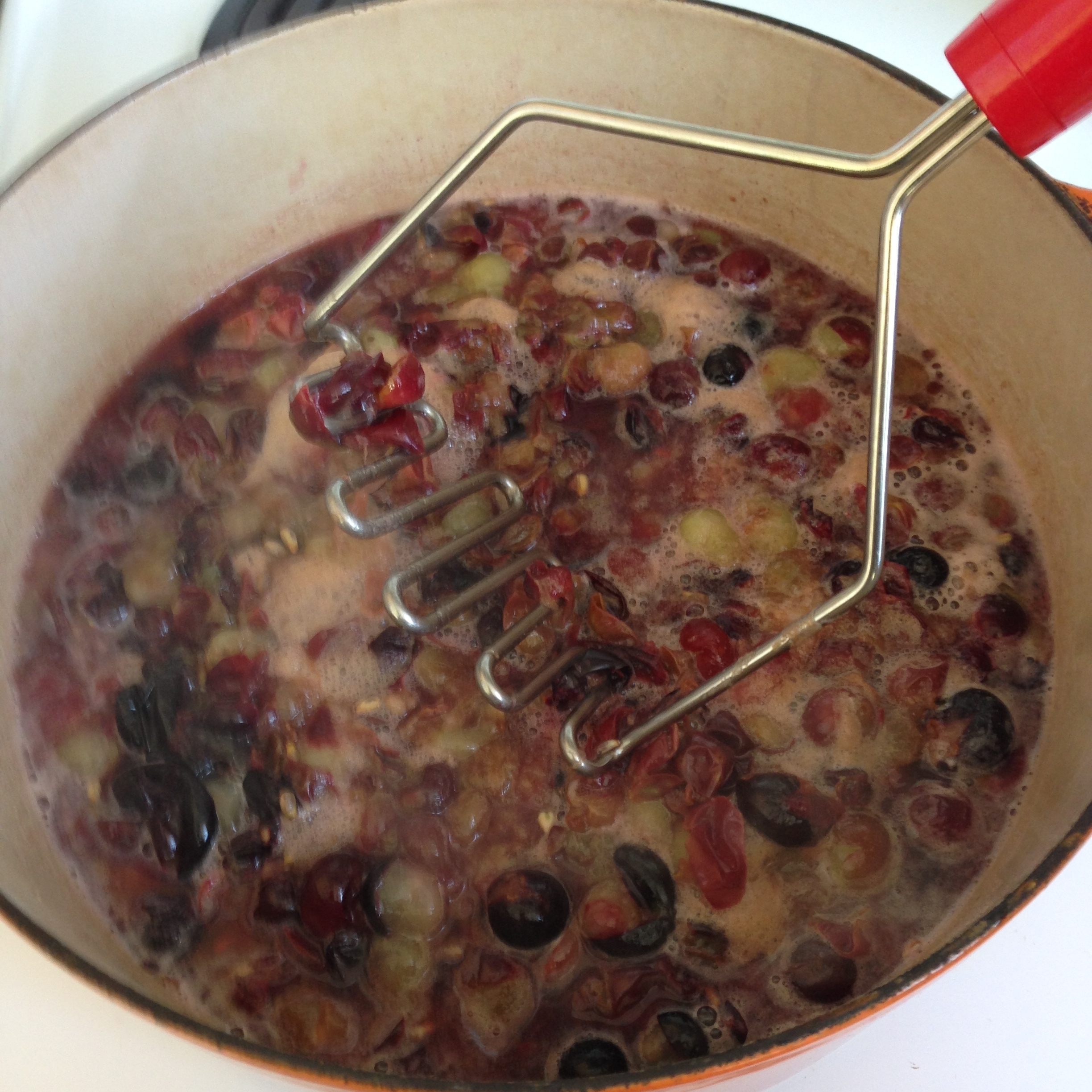

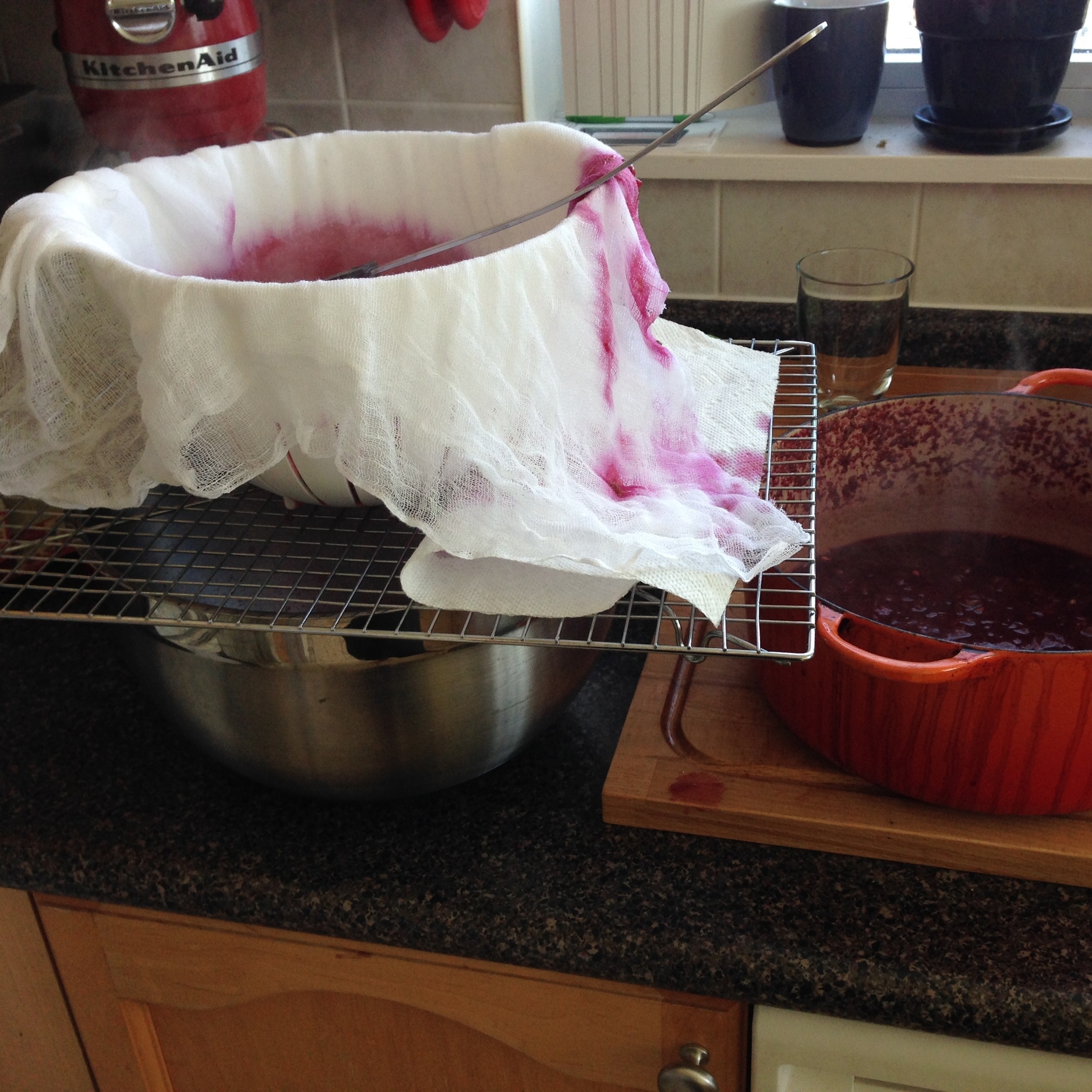
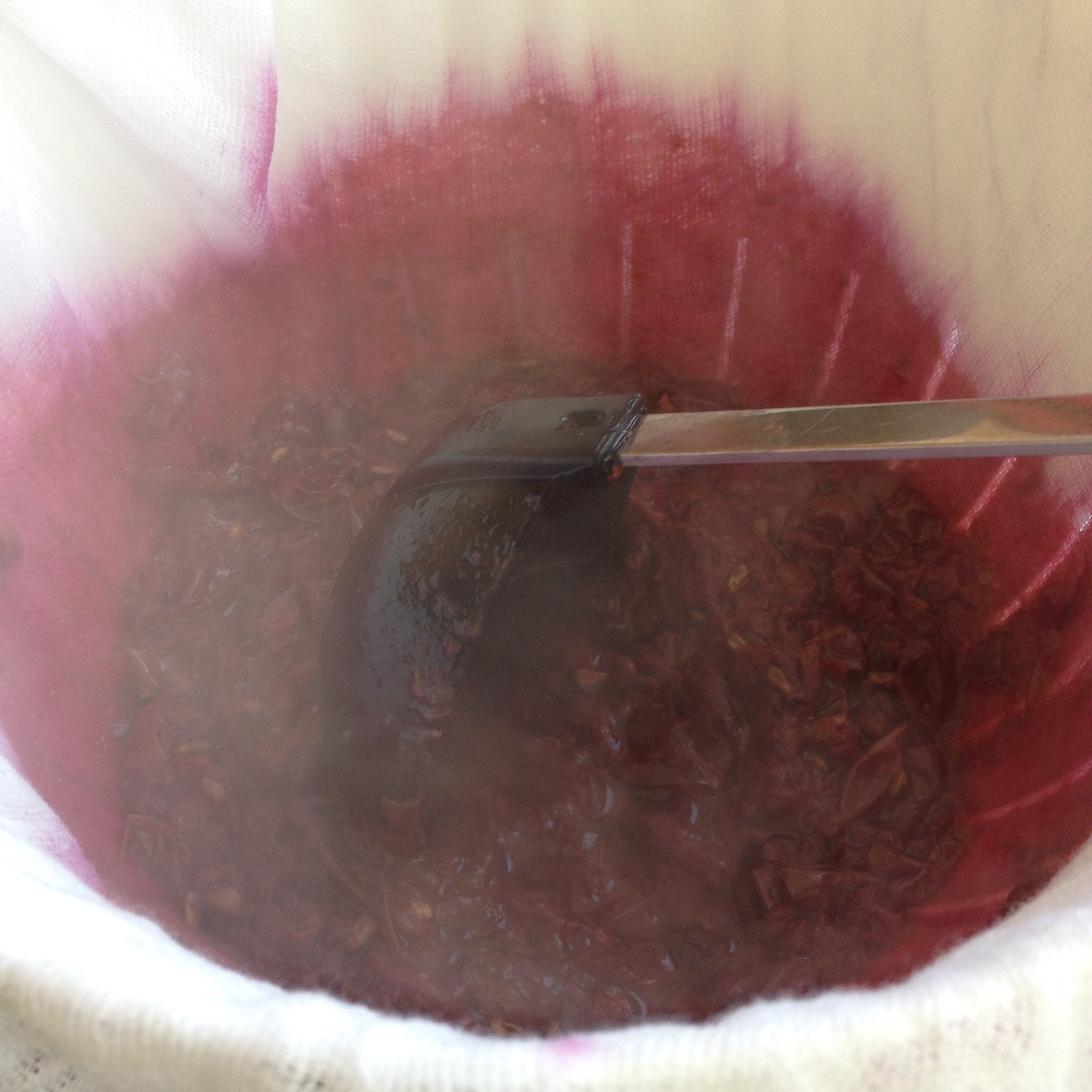
Making the juice is first on the roster! Wash and de-stem the grapes. In a non-reactive pot with a lid, place grapes inside and fill the pot with water till the grapes are Almost covered, usually about 1 1/2 cups of water. Bring this to a boil over high heat. Using a potato masher, mash the grapes. This releases juice. Cover the pot with the lid and boil the grapes for about 10 minutes, stirring occasionally. Watch it! So it doesn't boil over and make a sticky charcoal-y mess of your stove top.... She says from experience. Once the fruit is done being a boiling mash, take it off the heat. It's straining time! There are a couple ways of straining out the juice from this mash: There are actual sieves you can buy; there is cheese cloth; and there is the old school clean pillowcase method. I opted for the makeshift cheese cloth strainer method, although the pillowcase method makes for the clearest jelly. Let the juice drain from the mash for about 2 hours. Don't press the mash down or squeeze it or the resulting juice and jelly may be cloudy.
Success! Homemade grape juice made! =D It's jelly making time! (Unless you drink it all... and have to start over.)

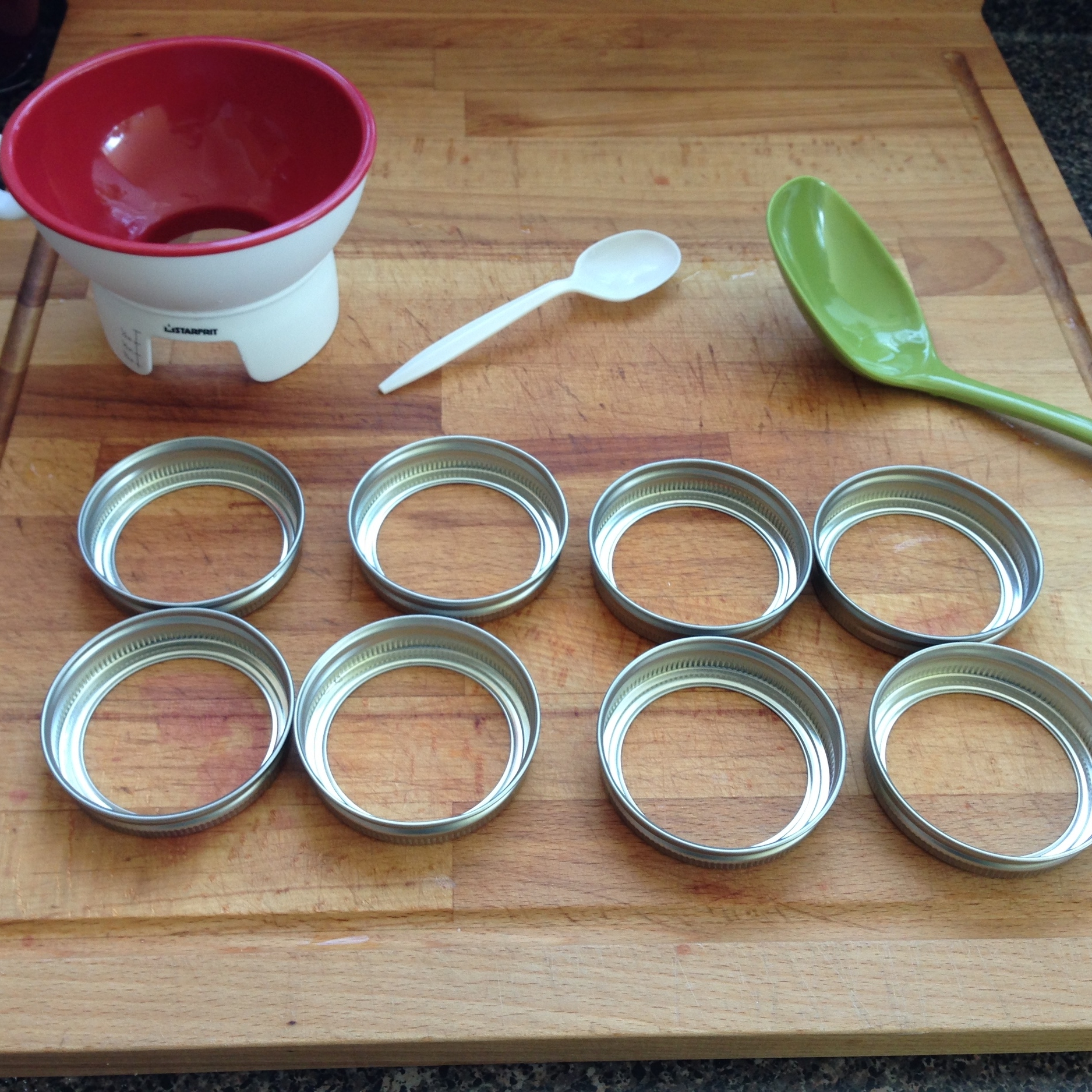
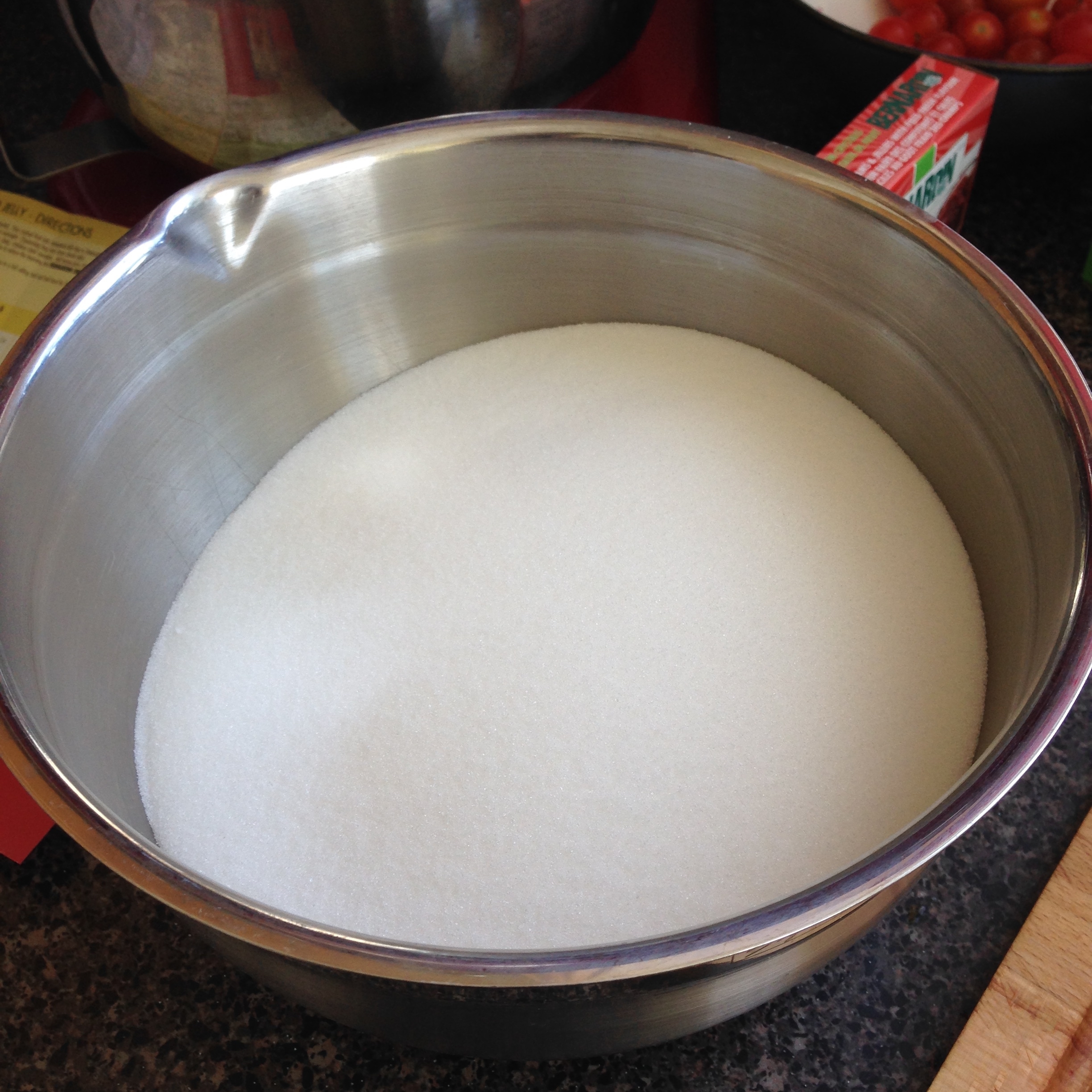
As per all my canning shenanigans, prepare, prepare, prepare! Clean all the utensils needed (ladle, wooden spoon, plastic spoon, plastic funnel). Also clean the jars and sterilize them in a boiling water bath canner for about 10 minutes. Keep this canner boiling! I usually keep a kettle of boiled water on stand by in case the canner needs to be topped up. Clean and set the screw bands in an accessible place. Set cleaned snap lids in a saucepan filled with water on low heat on the stove. This will soften the waxed rims and make for a better seal. Also measure out the sugar into a bowl and set this in an accessible place too. Ready!
In a non-reactive pot, add 5 cups of your homemade grape juice. (If you don't have enough you can add apple juice or some other acidic juice.) ***If the juice takes up more than half the volume of the pot it's tooooo small. Get a bigger one. Bigger is better in this situation.*** Stir in the pectin until it's all dissolved. (Add 1/2 tsp of margarine too. It cuts down on the foaming.)
Bring this to a rolling boil. That's a boil that won't stir down. Wait for it. You'll know it when you see it.
Add the sugar all in one go and stir quickly to mix it all together. Bring this back to a rolling boil and boil hard for 1 minute.
Remove the pot from the heat carefully. Molten sugar goo is not skin friendly. Skim the formed foam from the top of the jelly with a slotted spoon as good as possible. The foam can go in the sink. Bye bye proteins!
It's jar filling time! Remove one jar at a time from the boiling waterbath. Empty water in the jar back into the canner. Place the funnel a top the jar and ladle jelly slowly into the jar, leaving a 1/4 inch headspace. Using the plastic spoon, get out any air bubbles. Wipe the rim of the jar with a damp paper towel or clean damp cloth. Place a warmed snap lid onto the jar rim. Screw on a screw band until JUST Fingertip tight. As soon as there is enough resistance to your thumb and forefinger that the band won't turn anymore, Stop. Into the canner! Repeat!
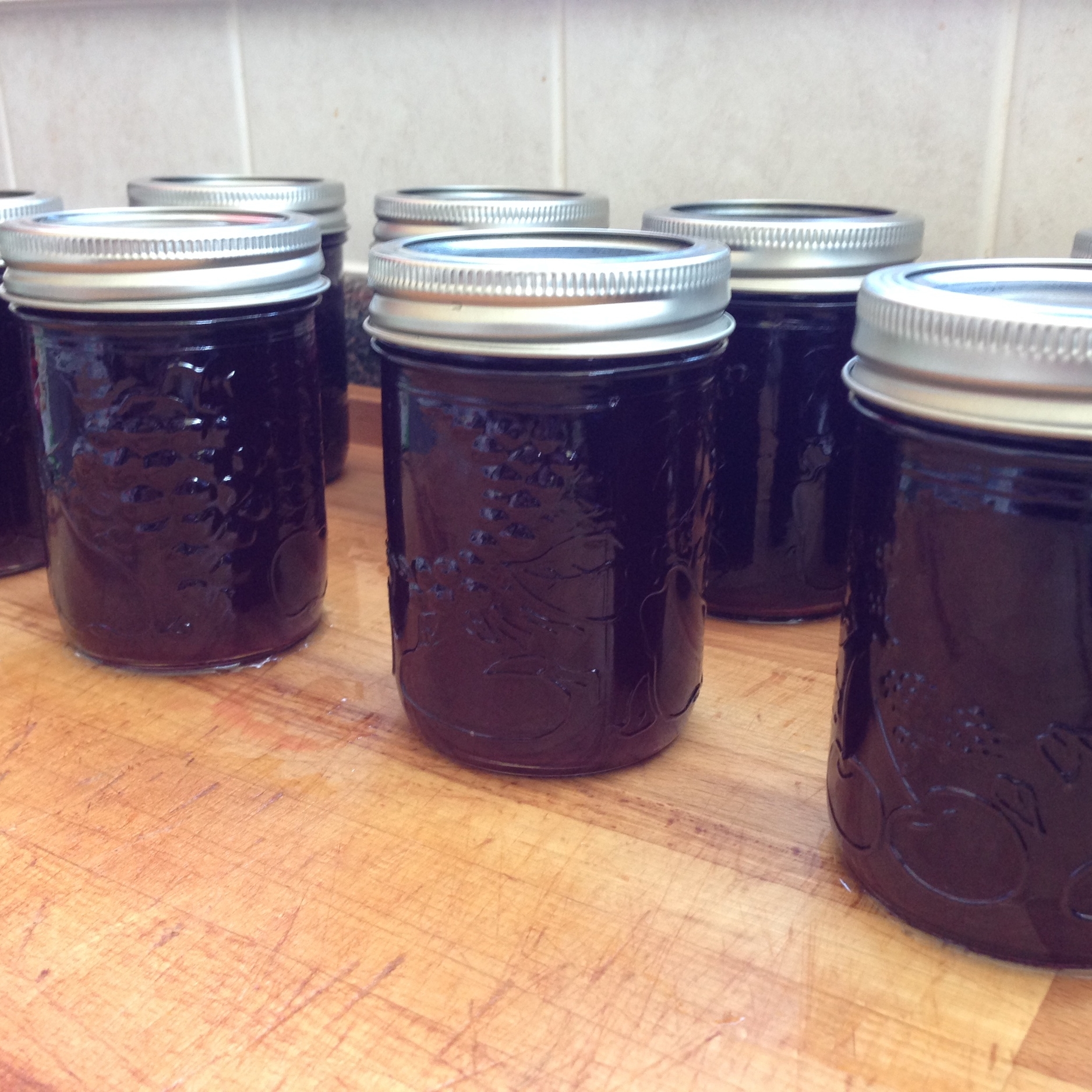


When all the jars are filled and in the canner, boil the jars vigorously for at least 10 minutes. Check the altitudes though! Higher altitudes need longer. Most pectins will come with a sheet that say how long to process the jars.
Remove the jars from the canner and set down in a place where they won't be disturbed. Let them cool completely. I leave mine fore 24 hours before handling them. After they're cooled, check that the jars have properly sealed. The snap lid should have a divot inwards and also should be securely suctioned to the jar. Don't worry if they haven't sealed! They just get to live in the fridge and get eaten first! Lucky them!
That was quite the grape adventure. Great - grape - great.... Eh?? =D =D =D
.....
Shhhhhh. It's funny. Really.
Also! I made some not purple grape juice! Essentially just take out the grapes skins when making the juice. =) Yuuuuum.
-Andrea
The Half-Assed Hobbyist






